


Book of Hours (Use of Rome)
, Southern Netherlands, Bruges, c. 1480











Book of Hours (Use of Rome)
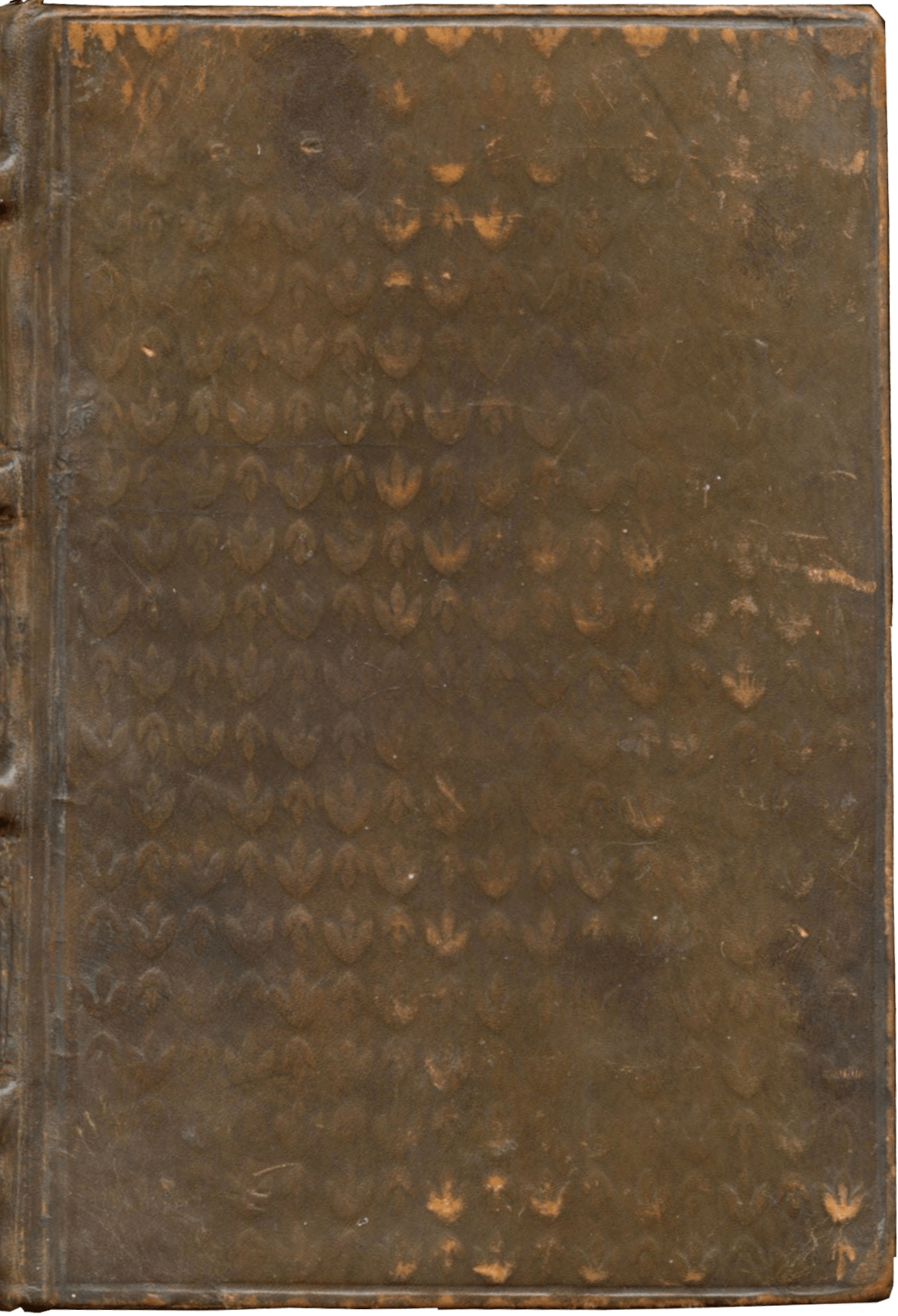
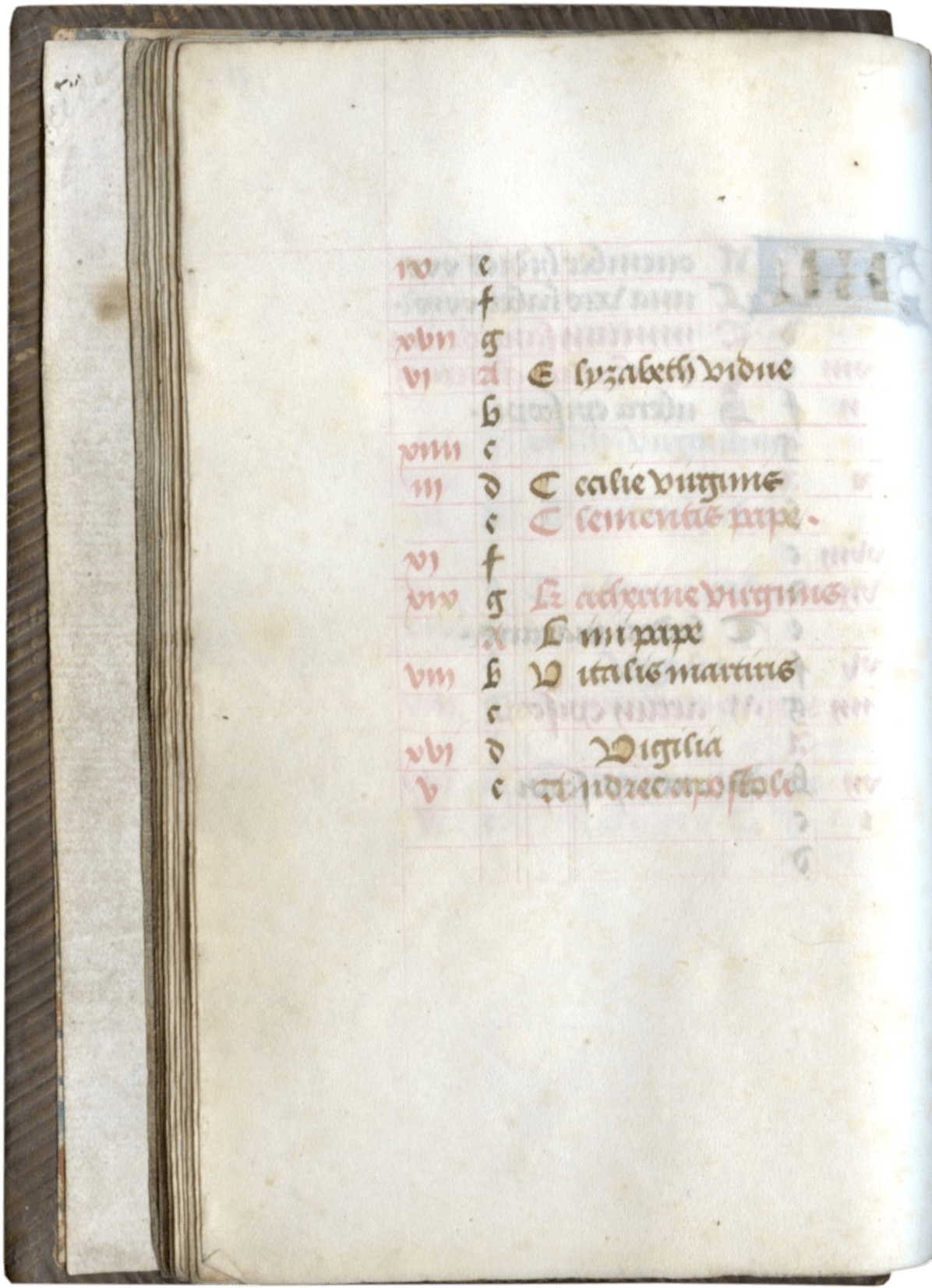

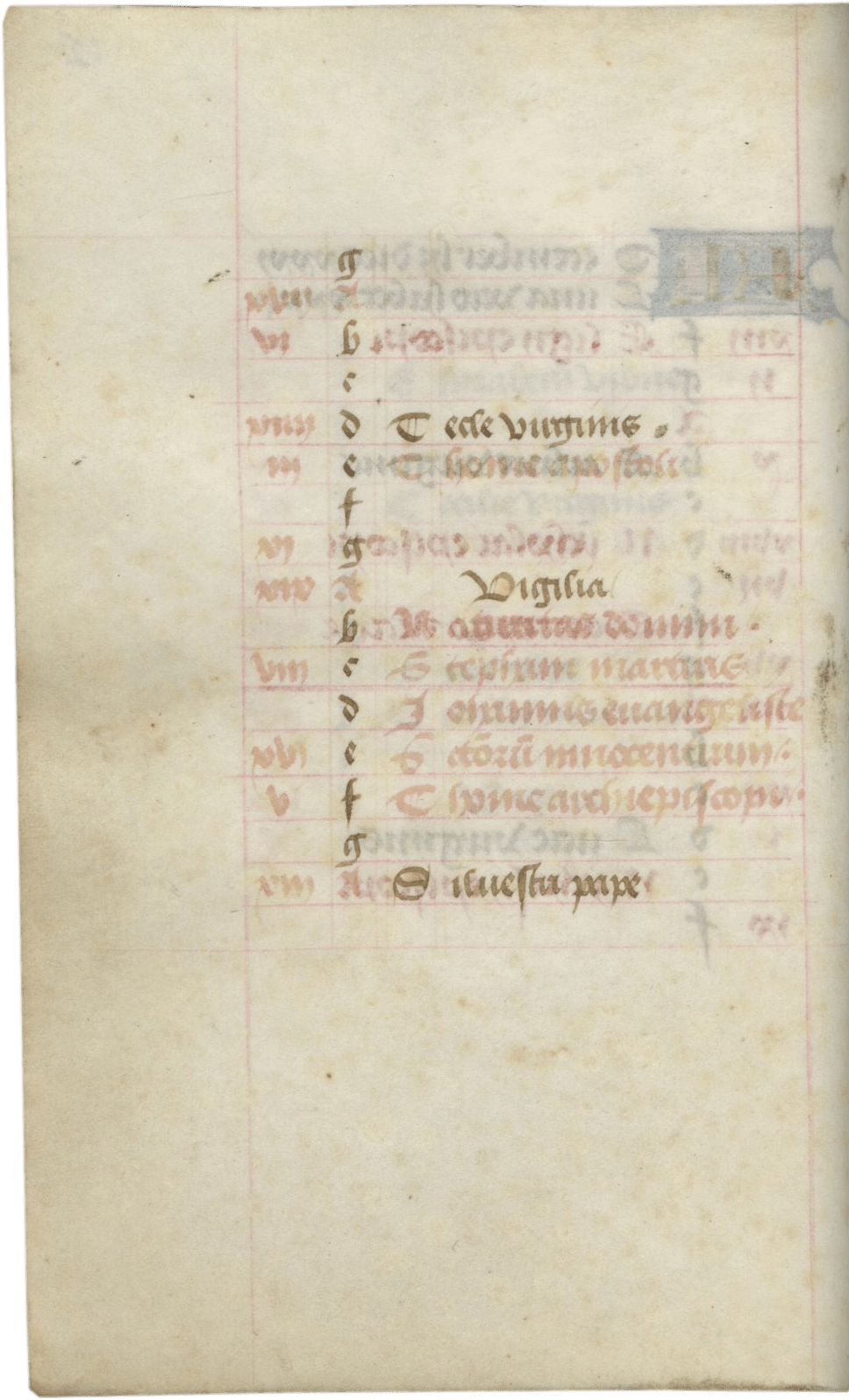



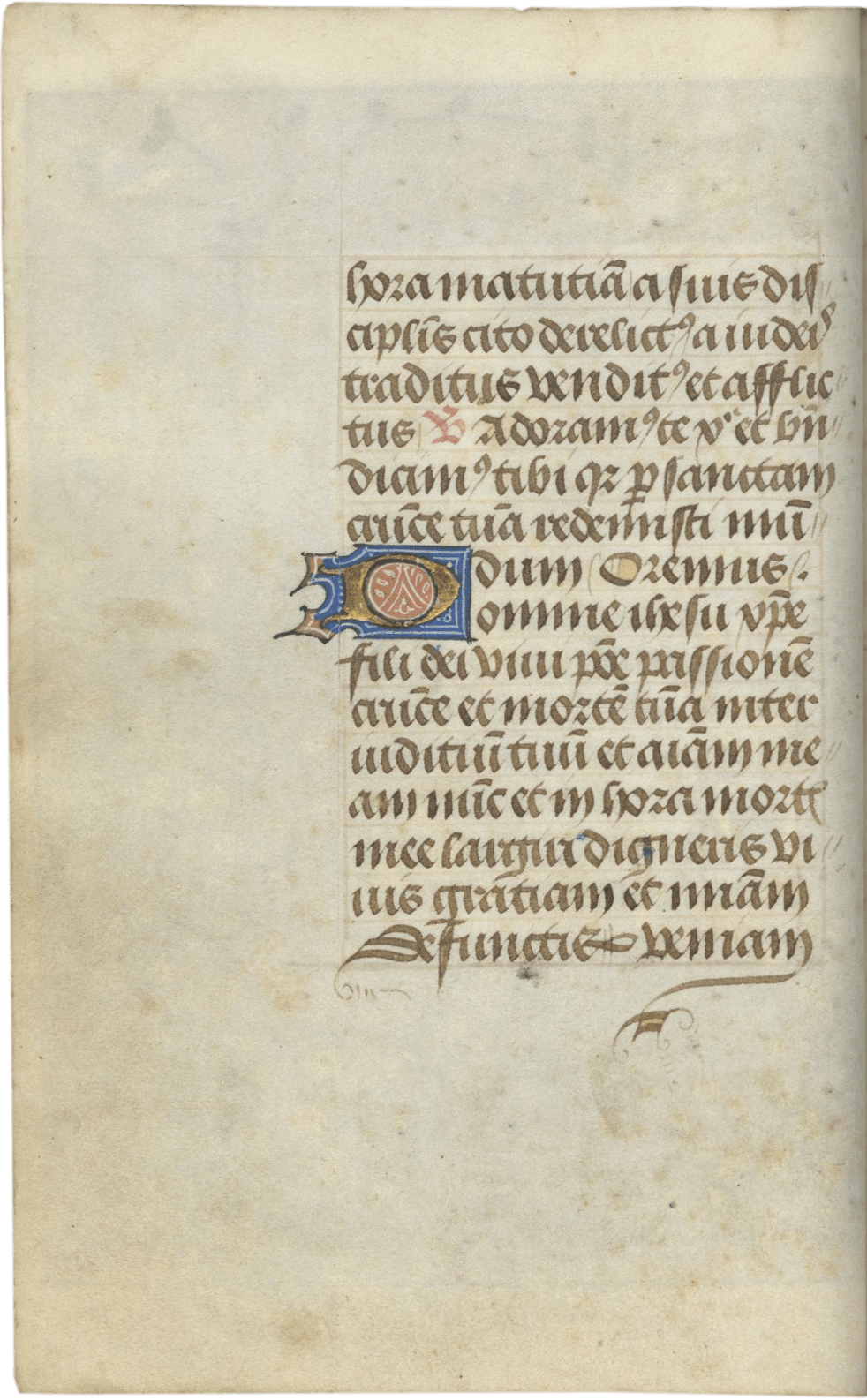
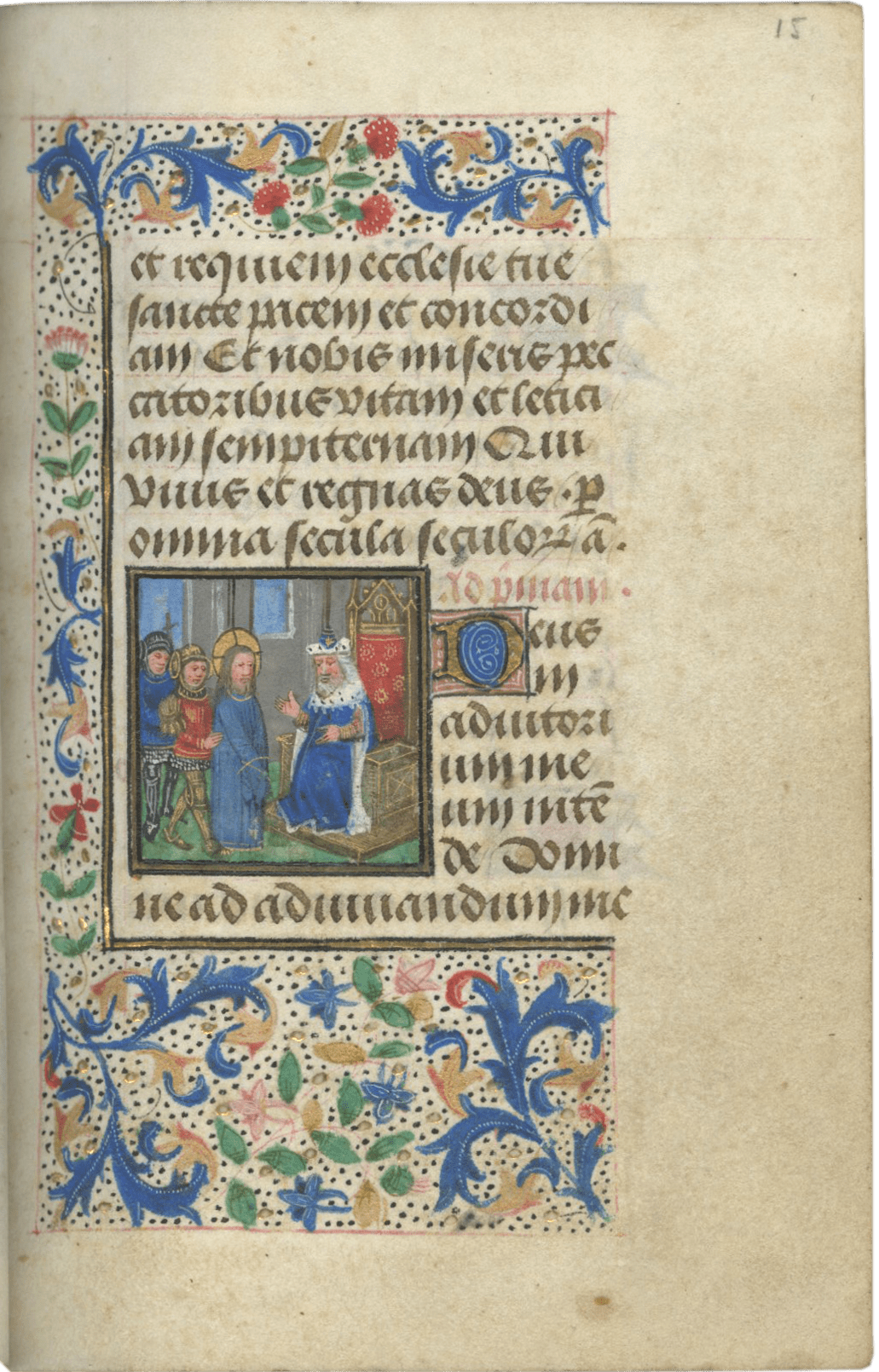

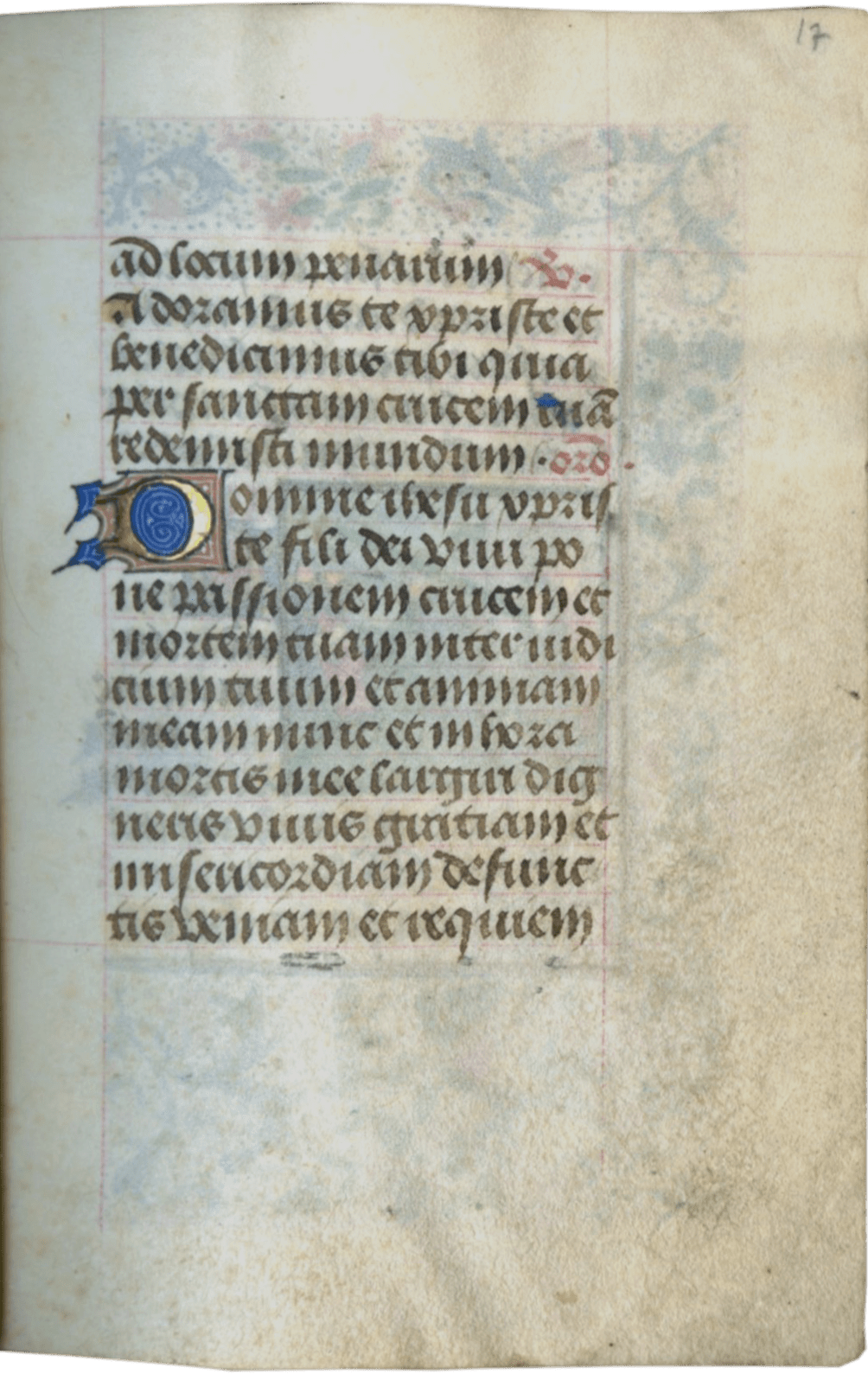
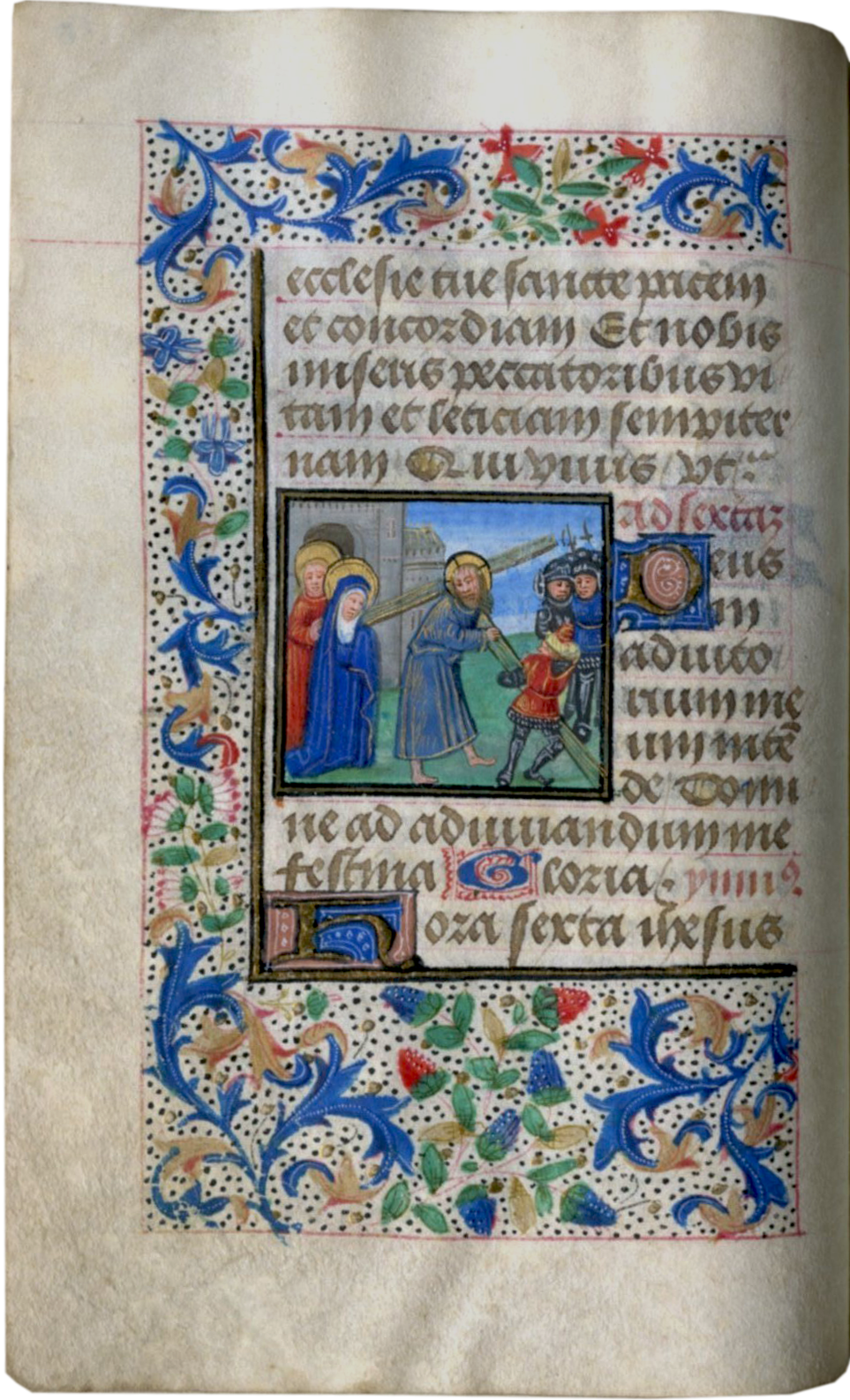
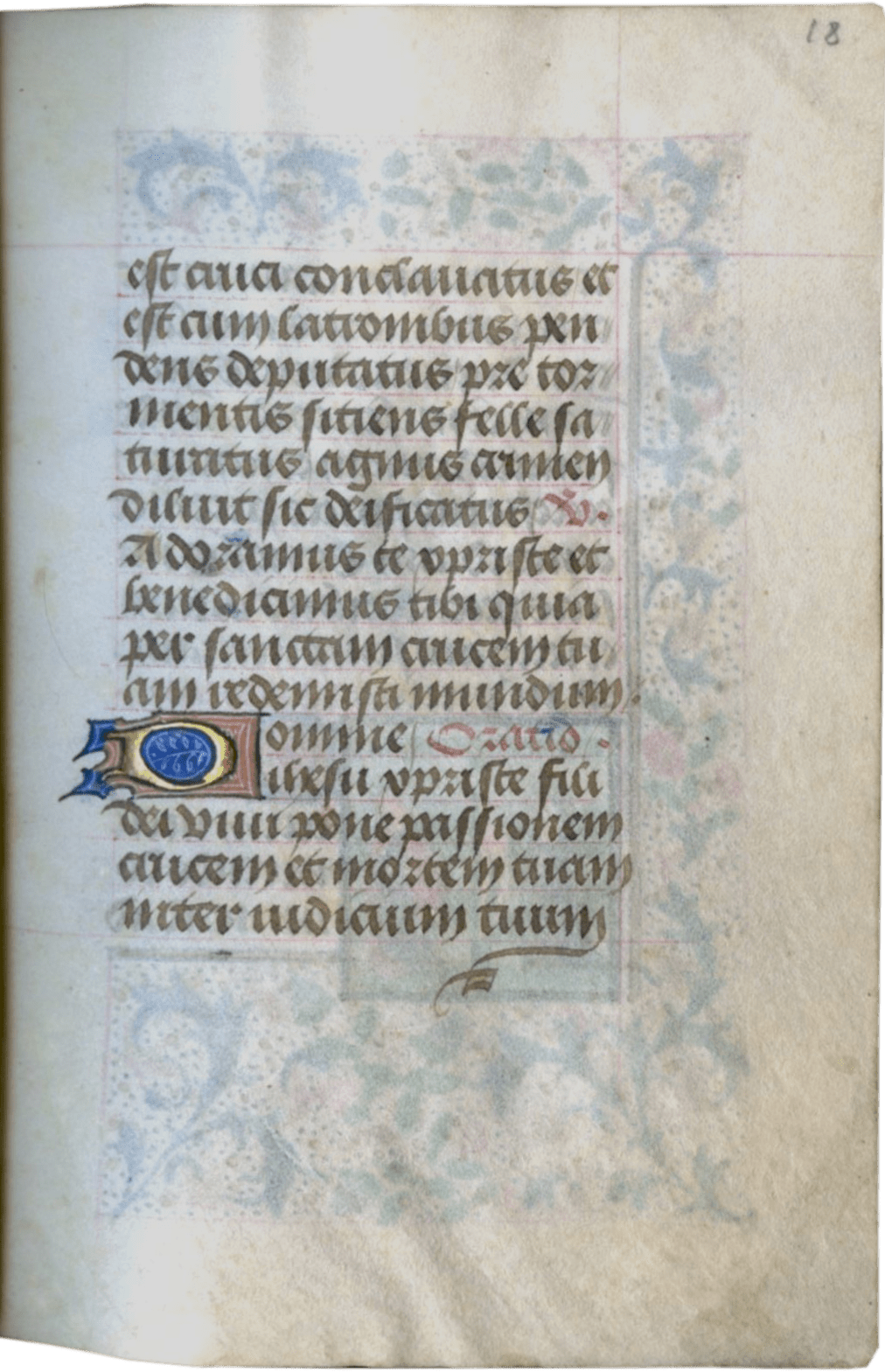
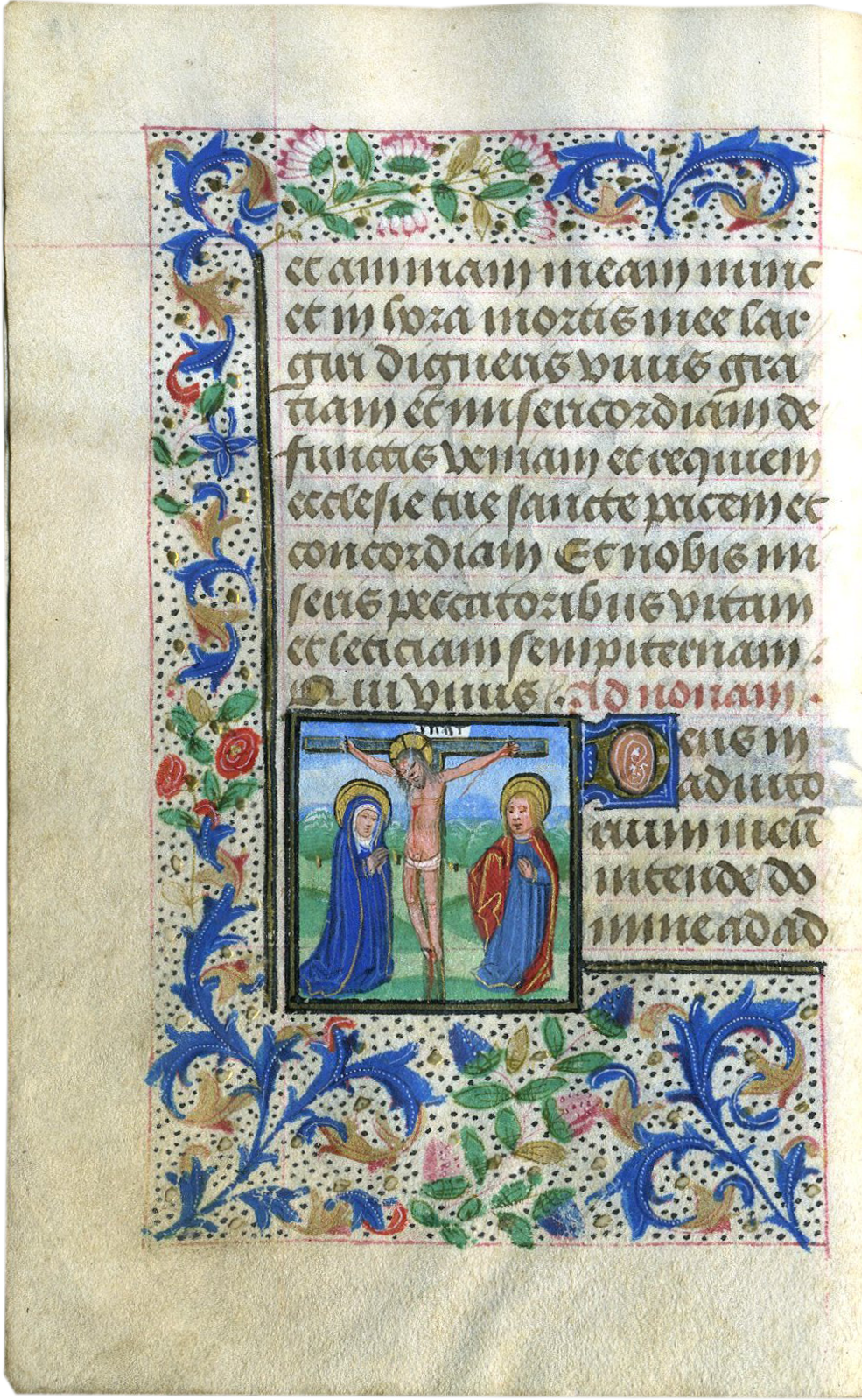
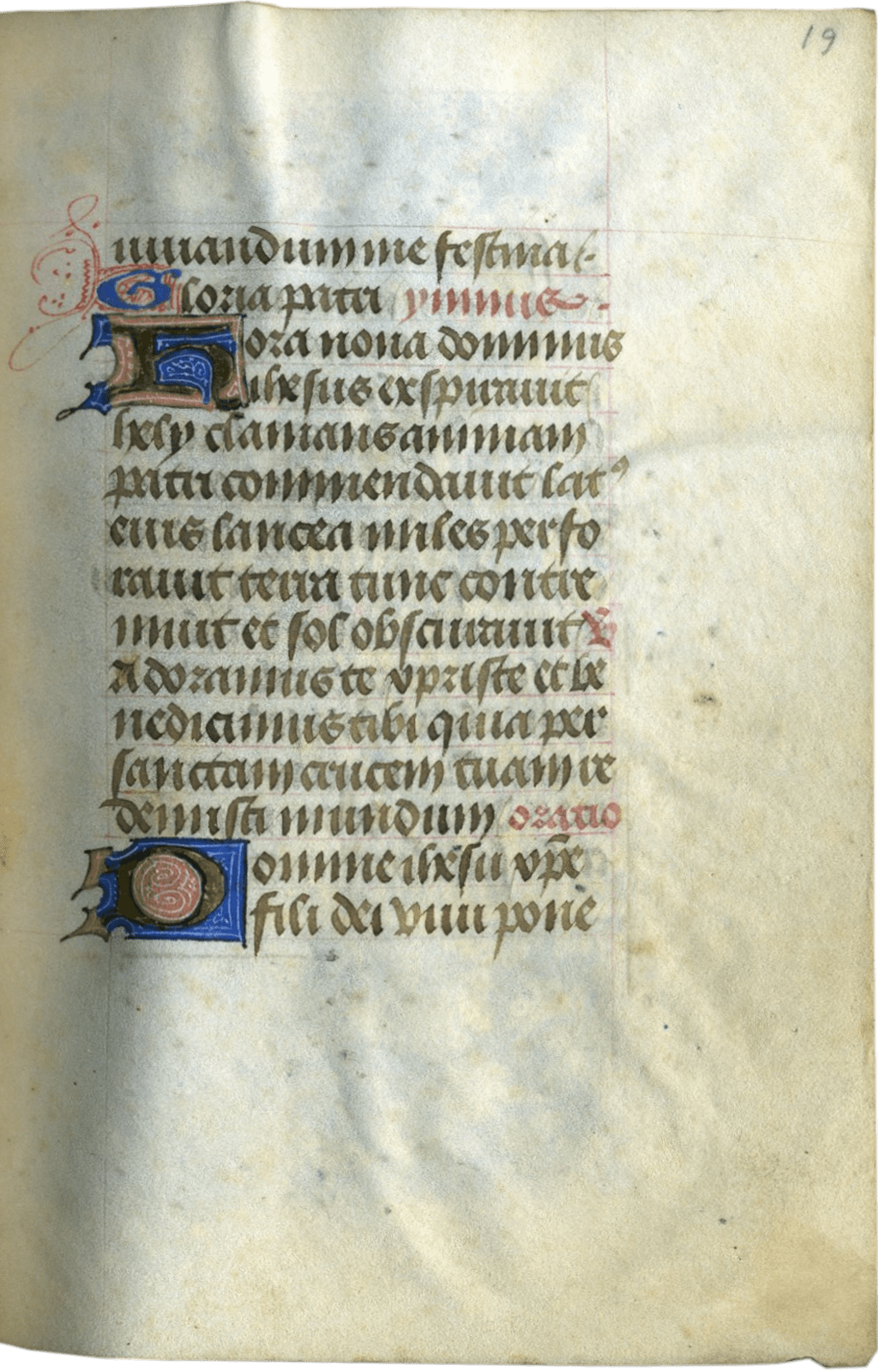


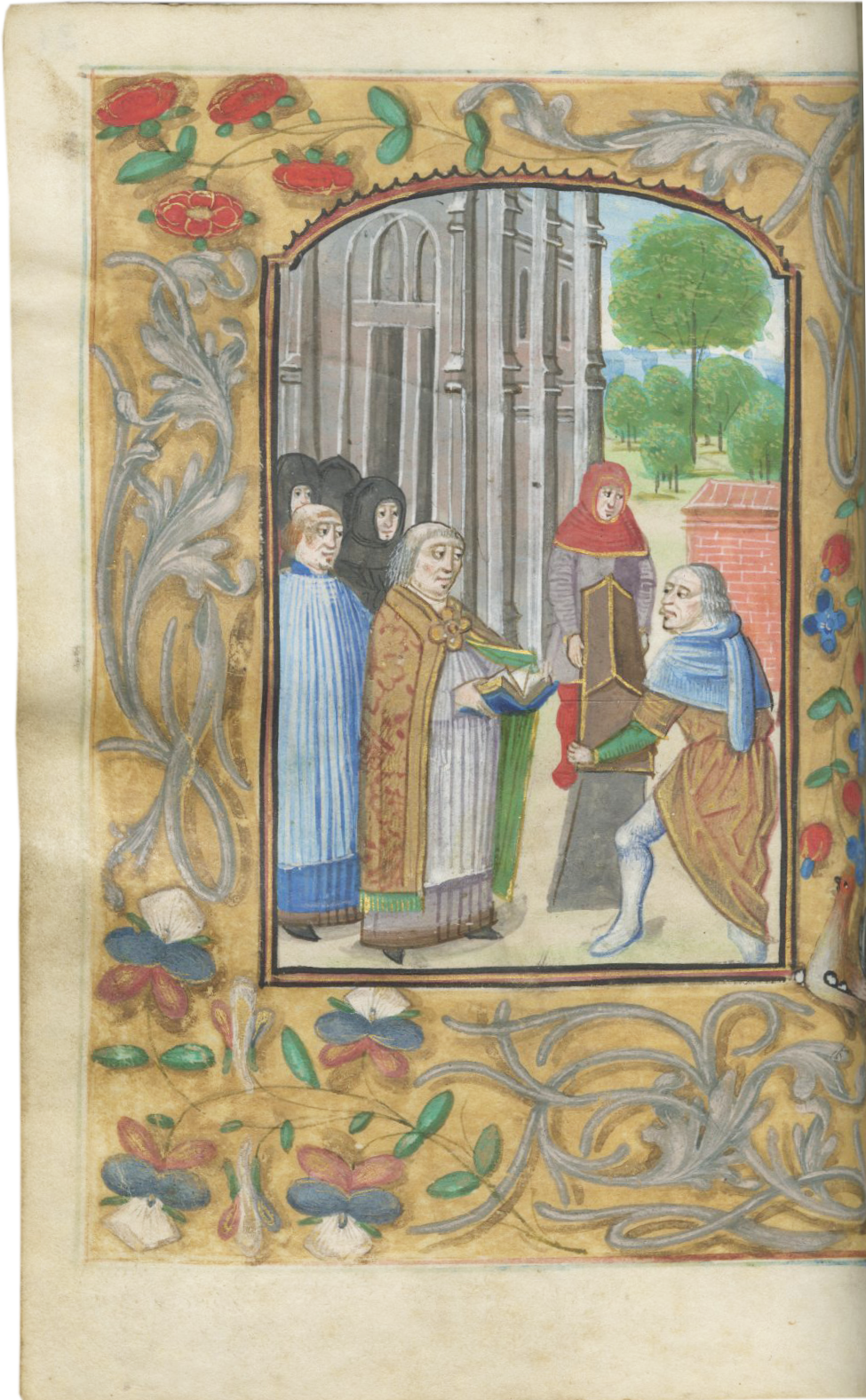

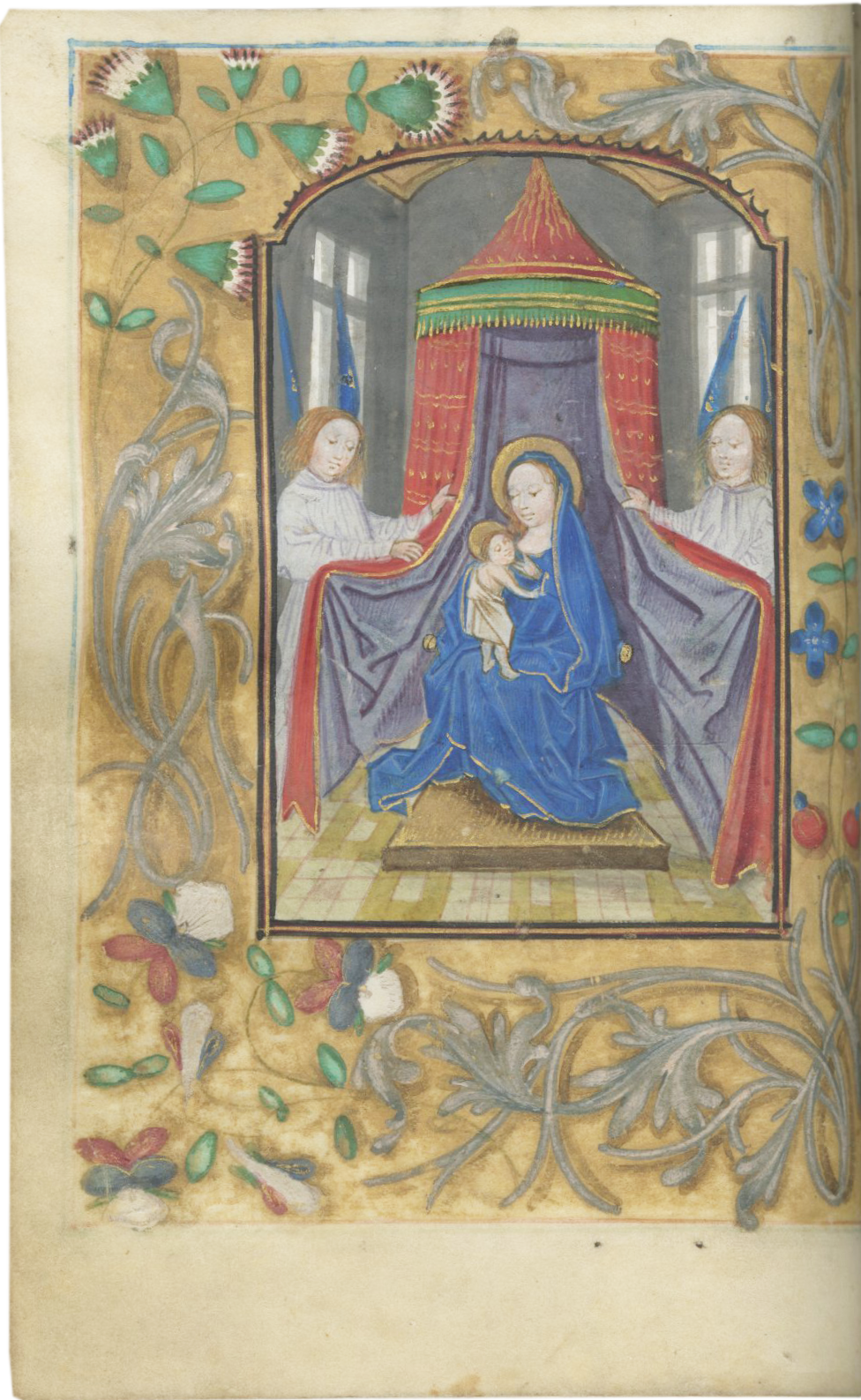
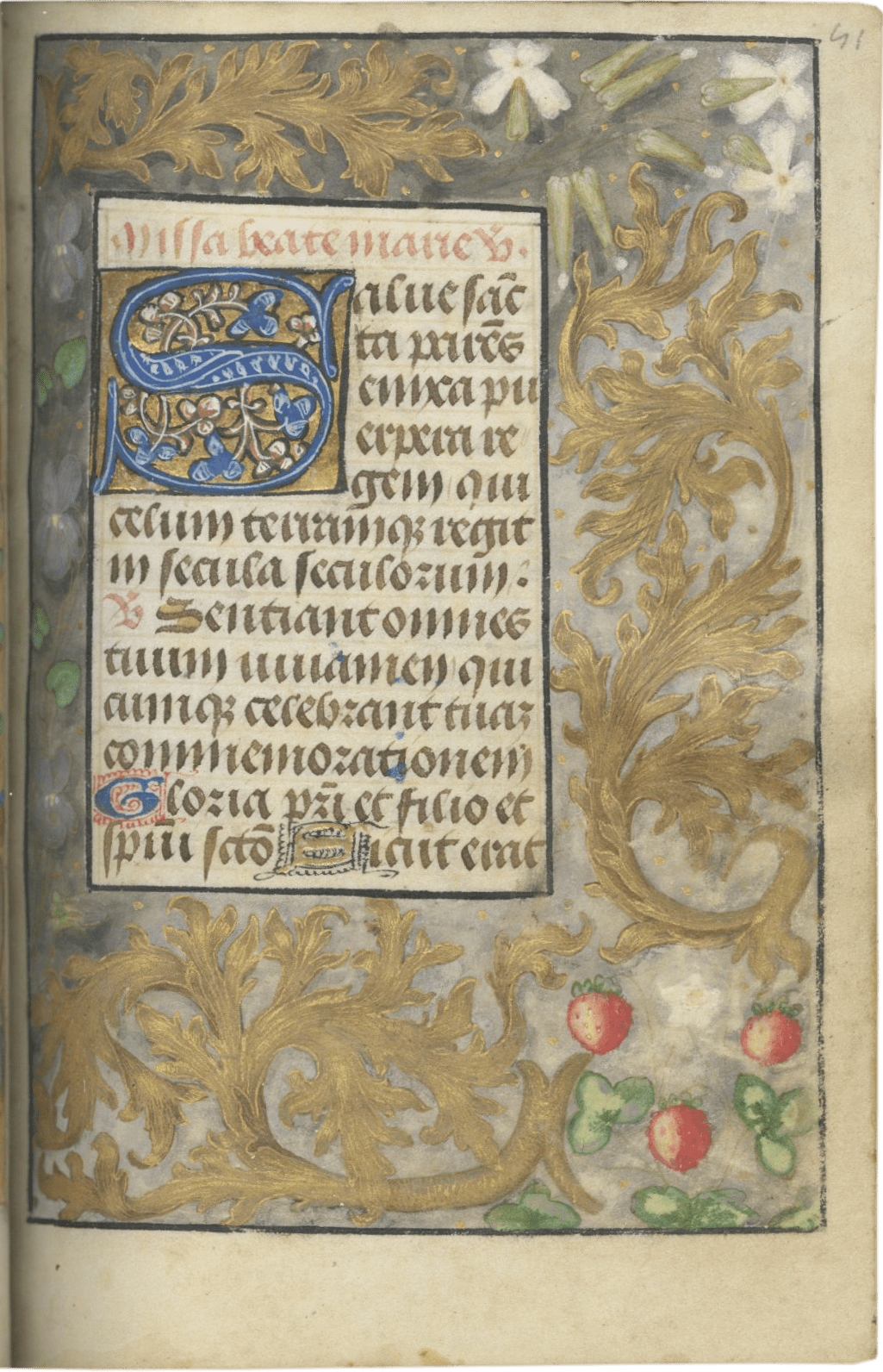
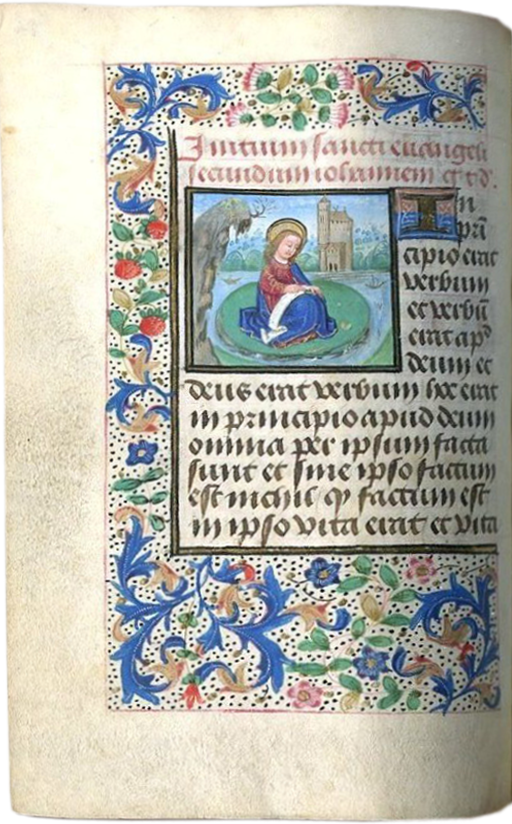


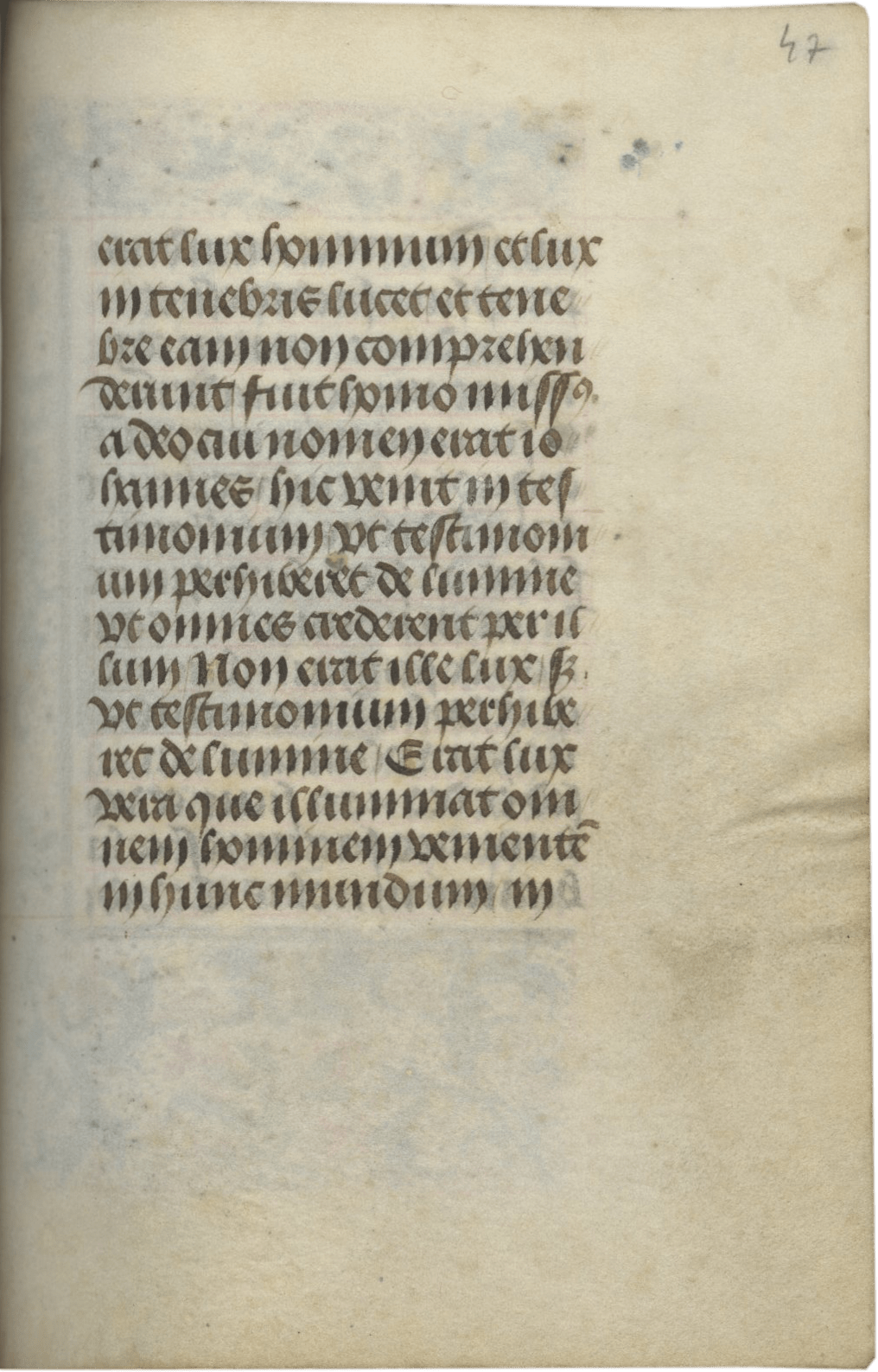

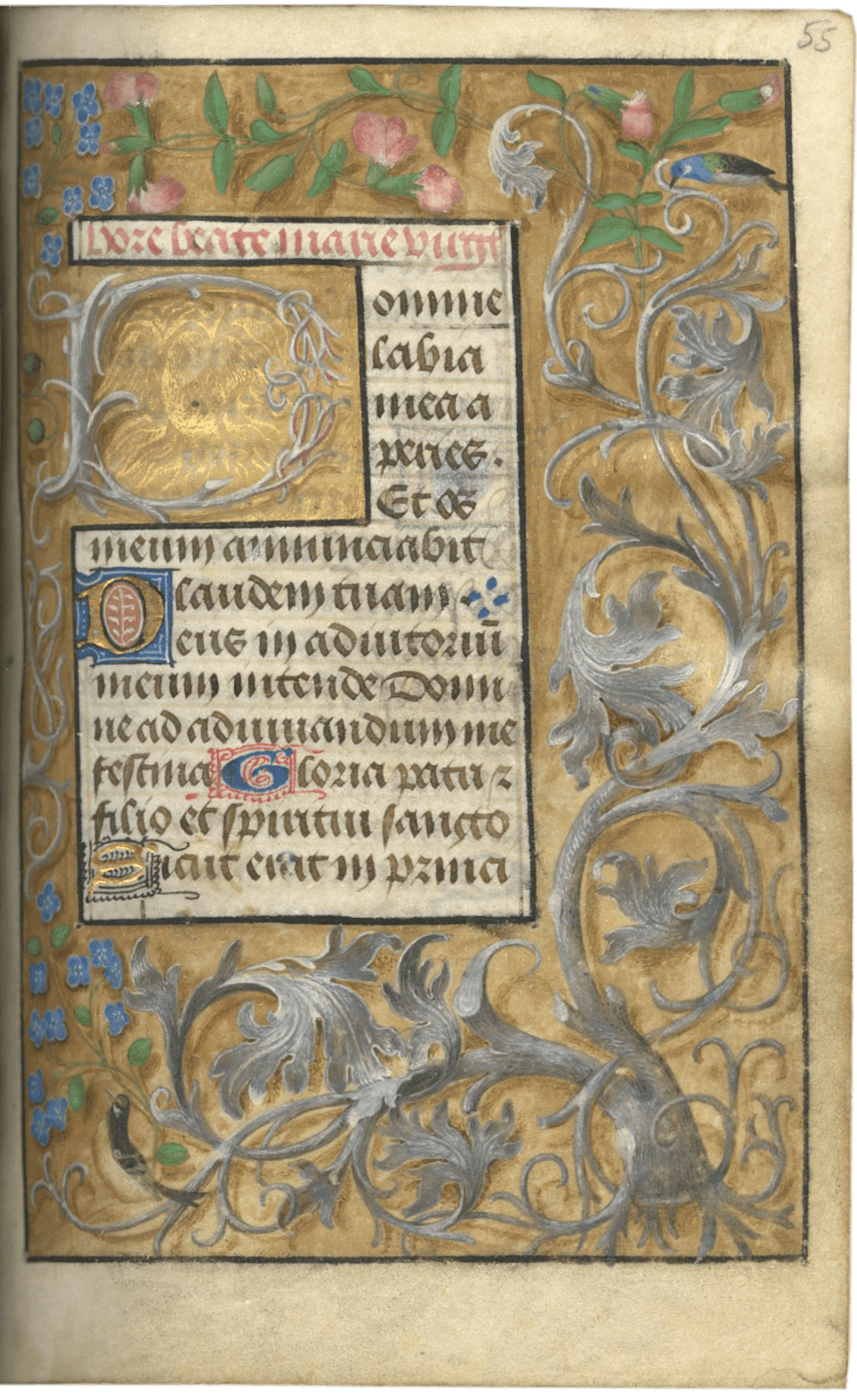

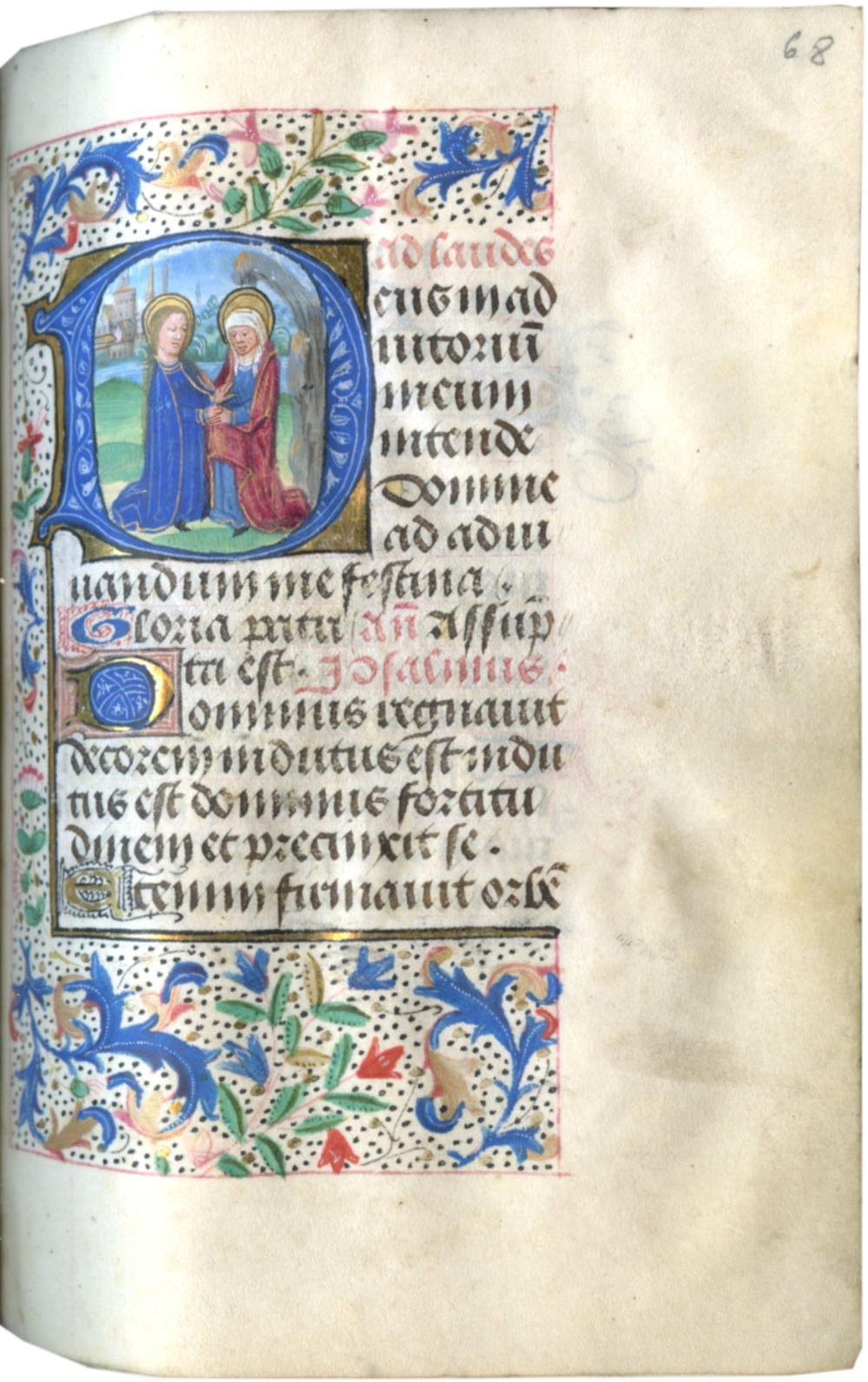
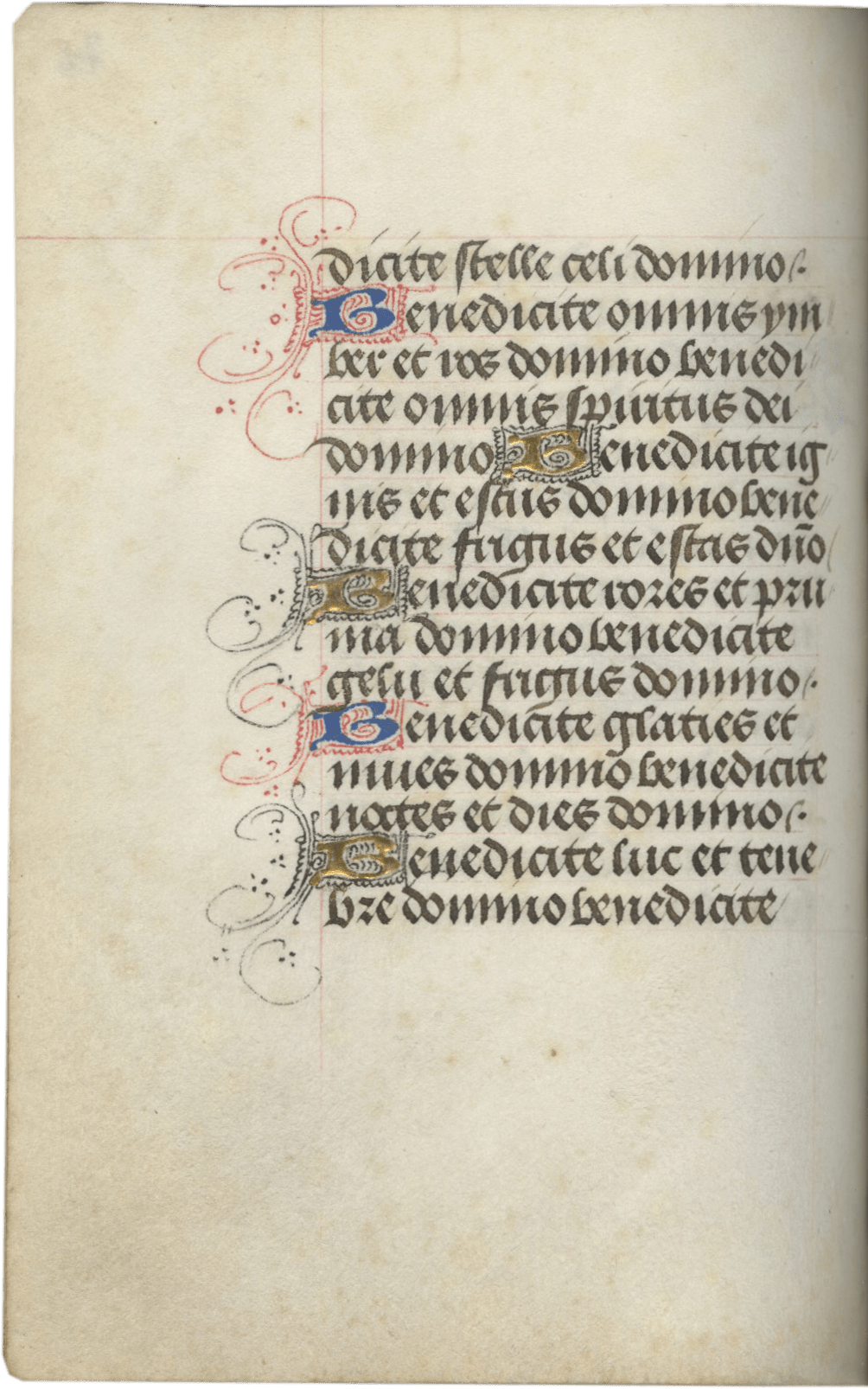

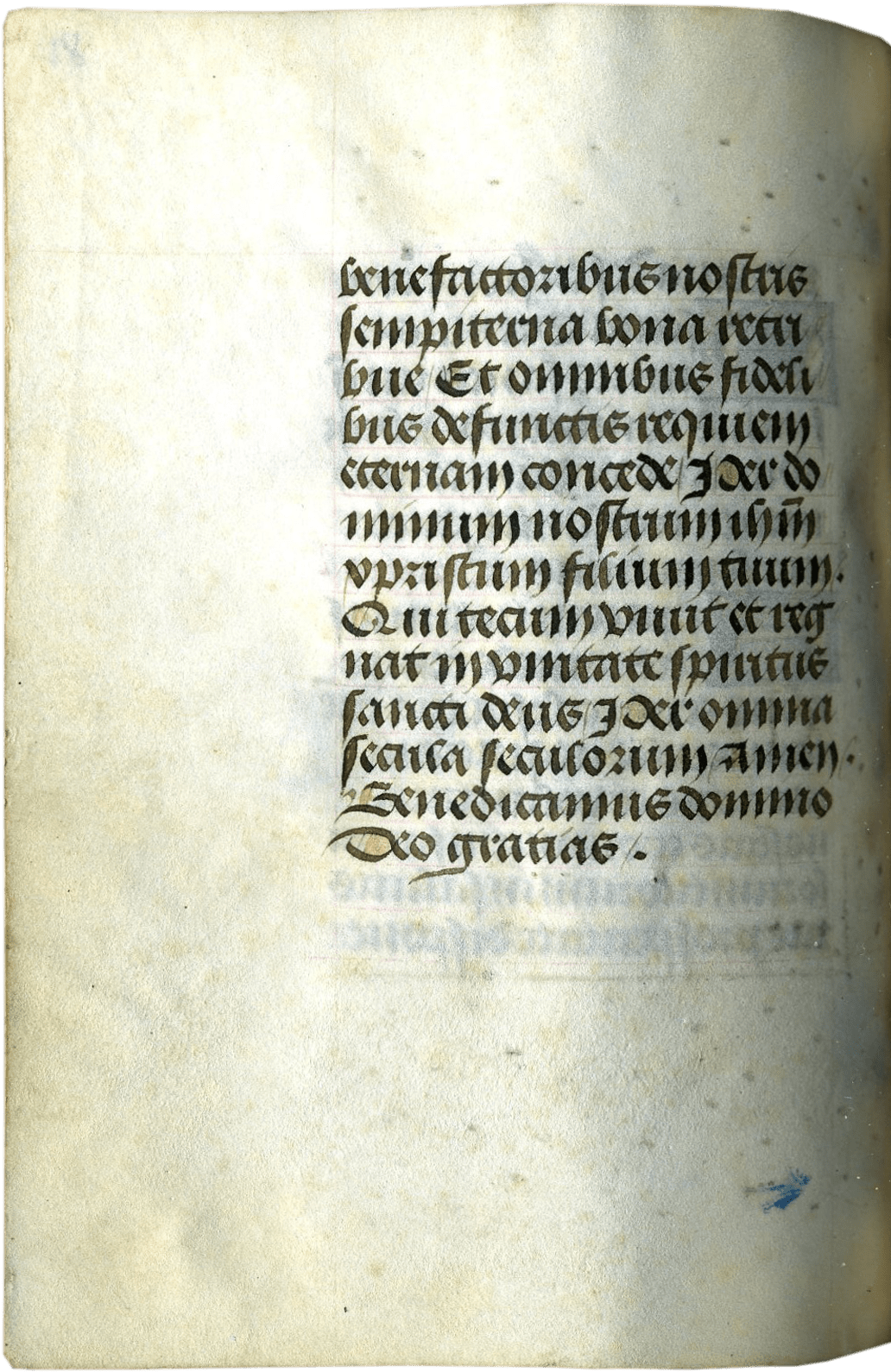
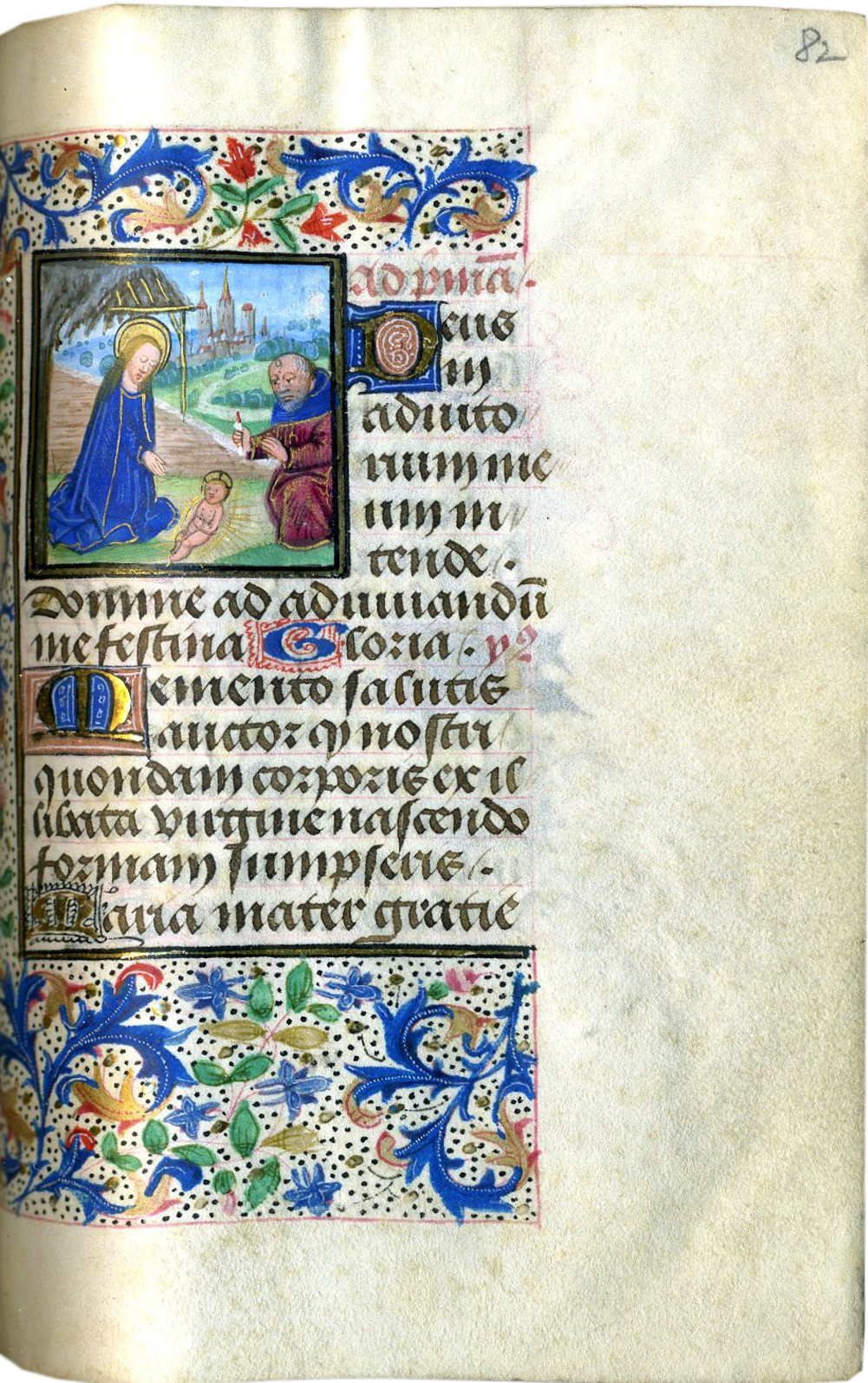





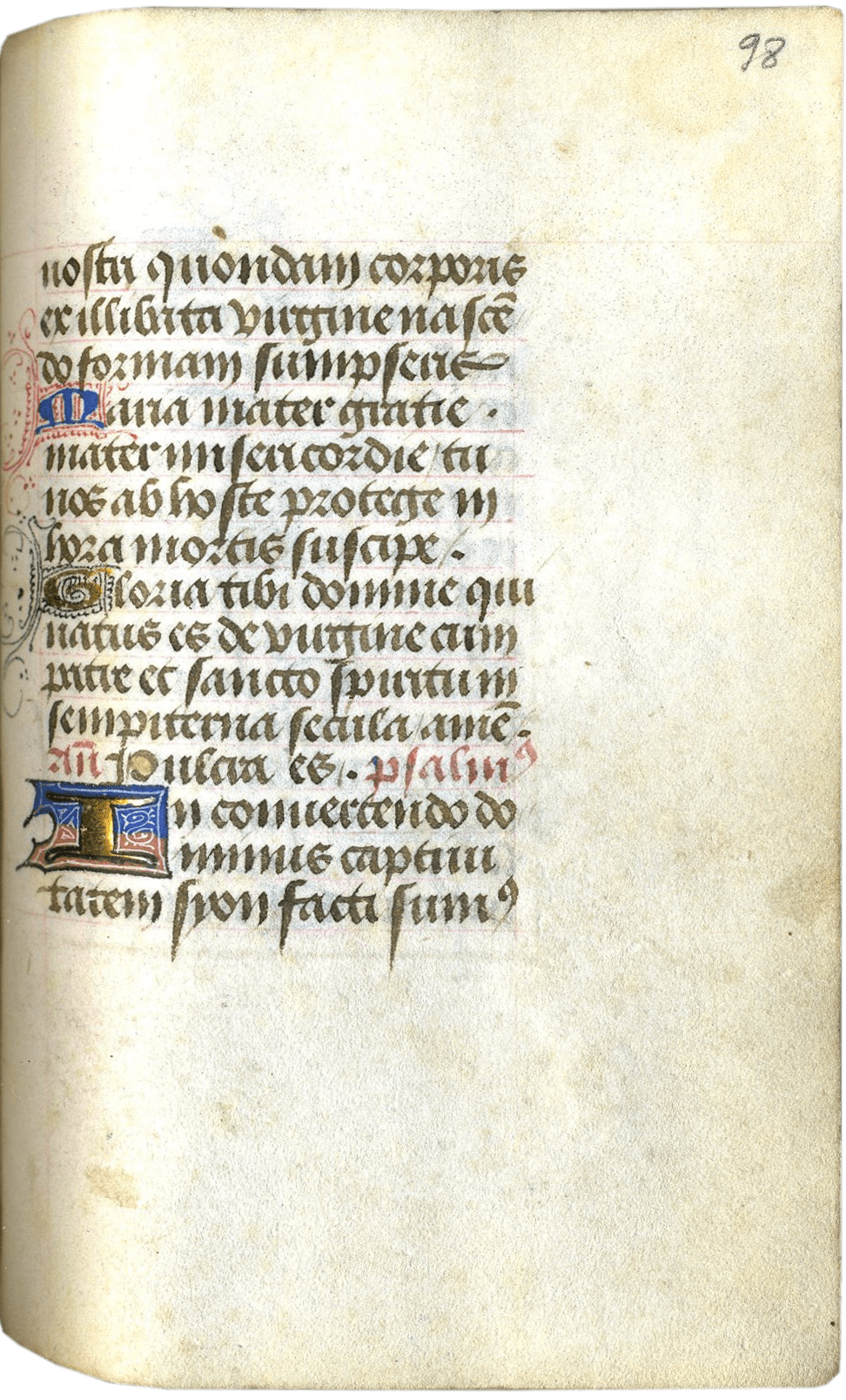


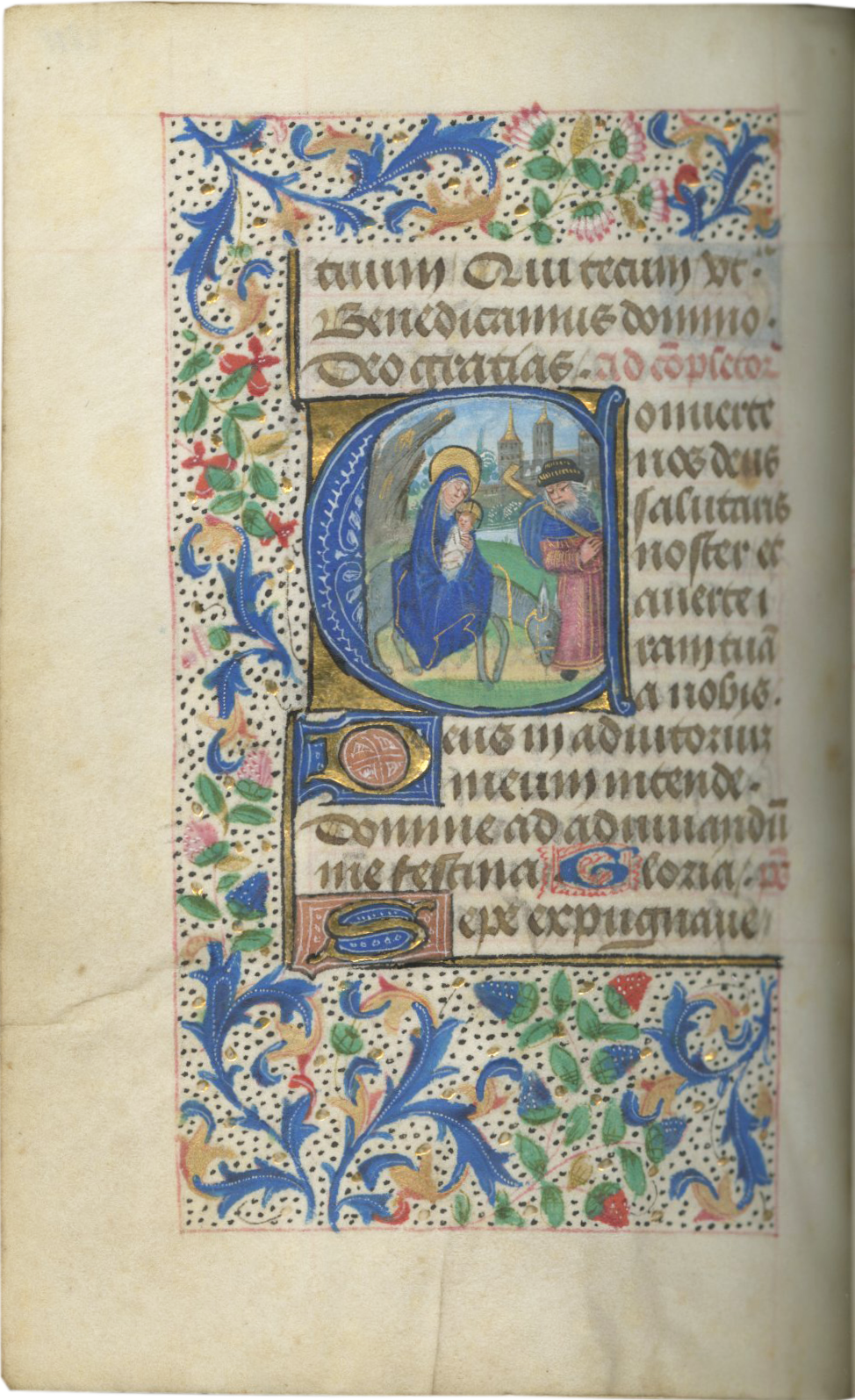

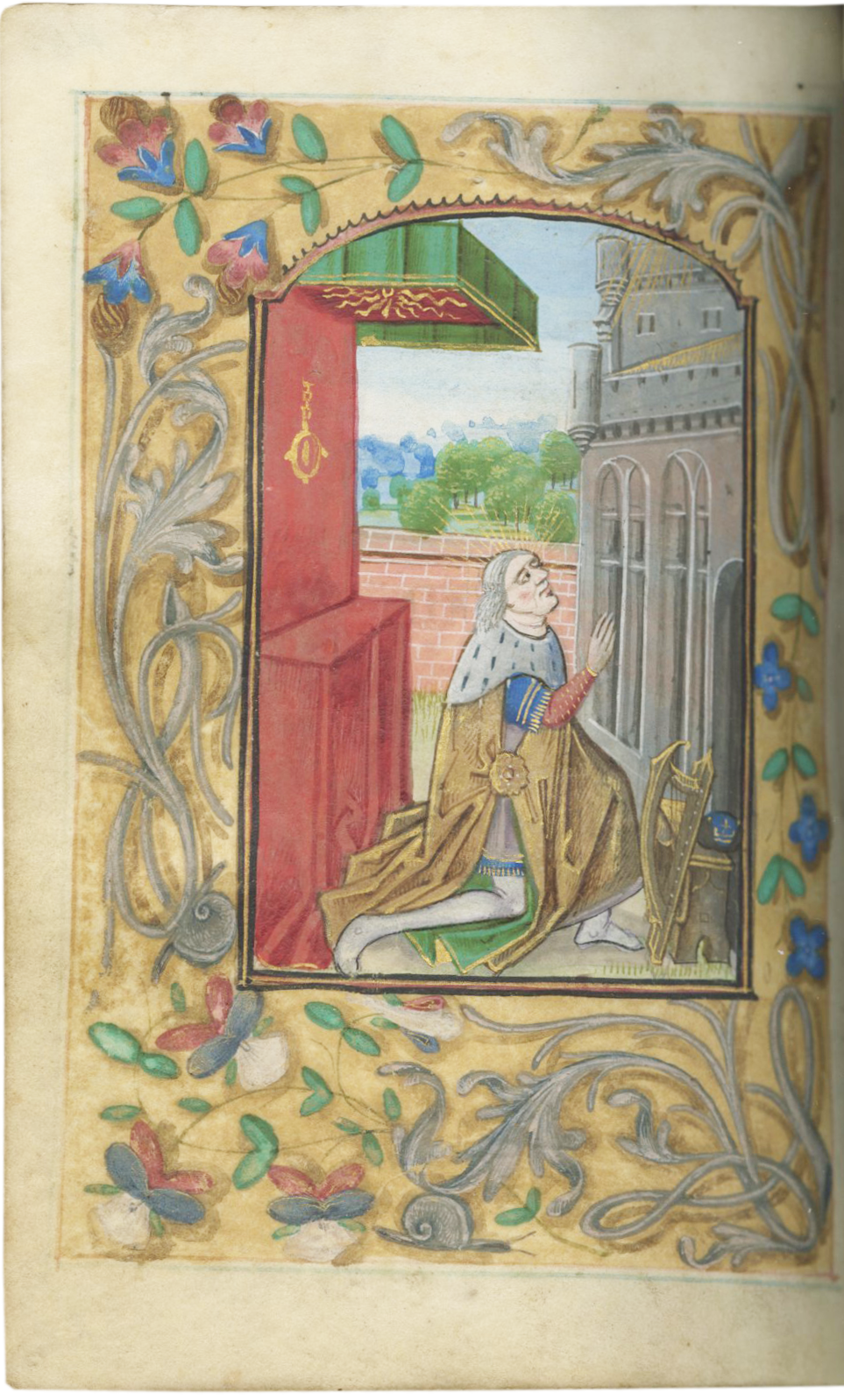

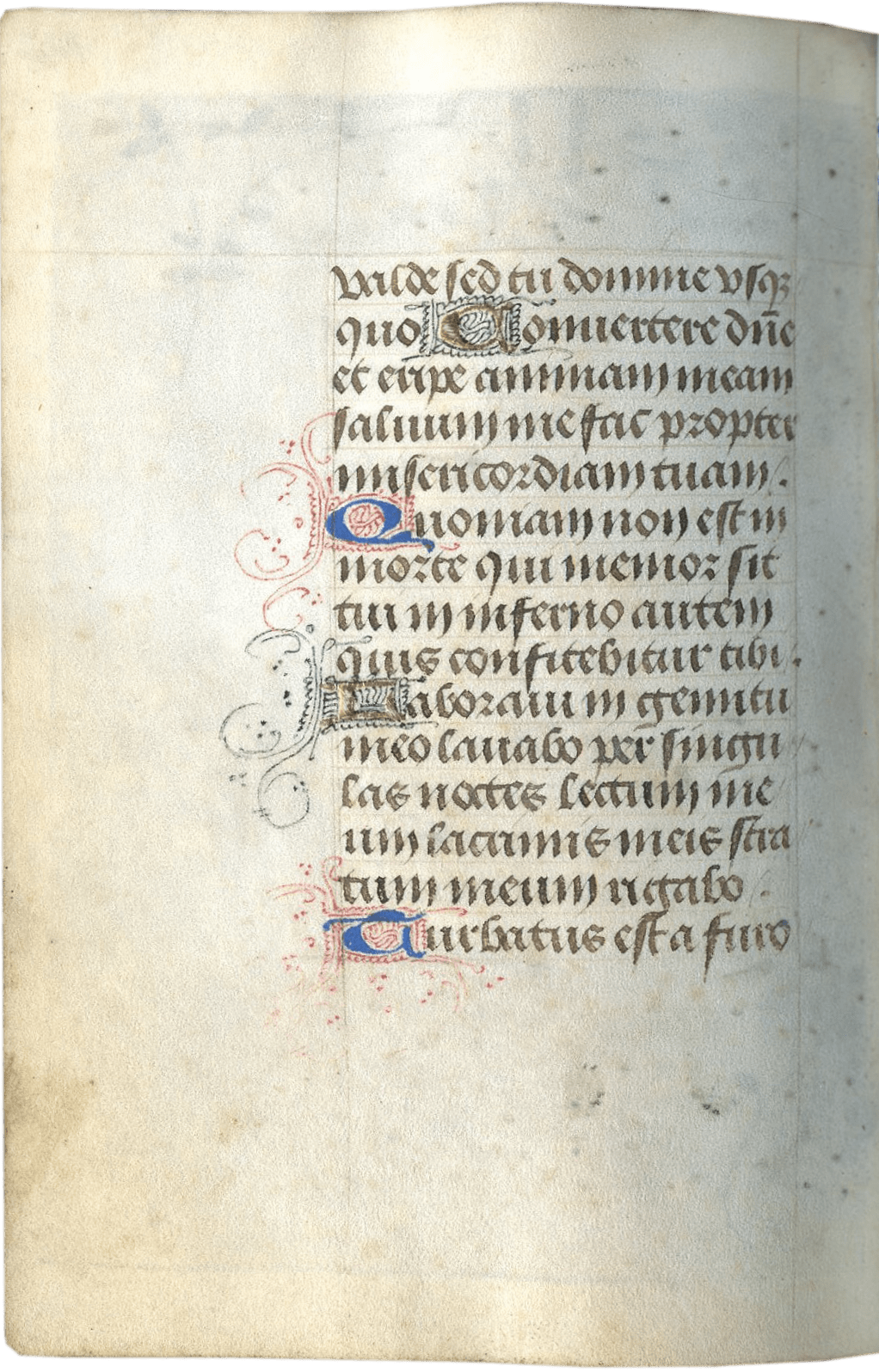
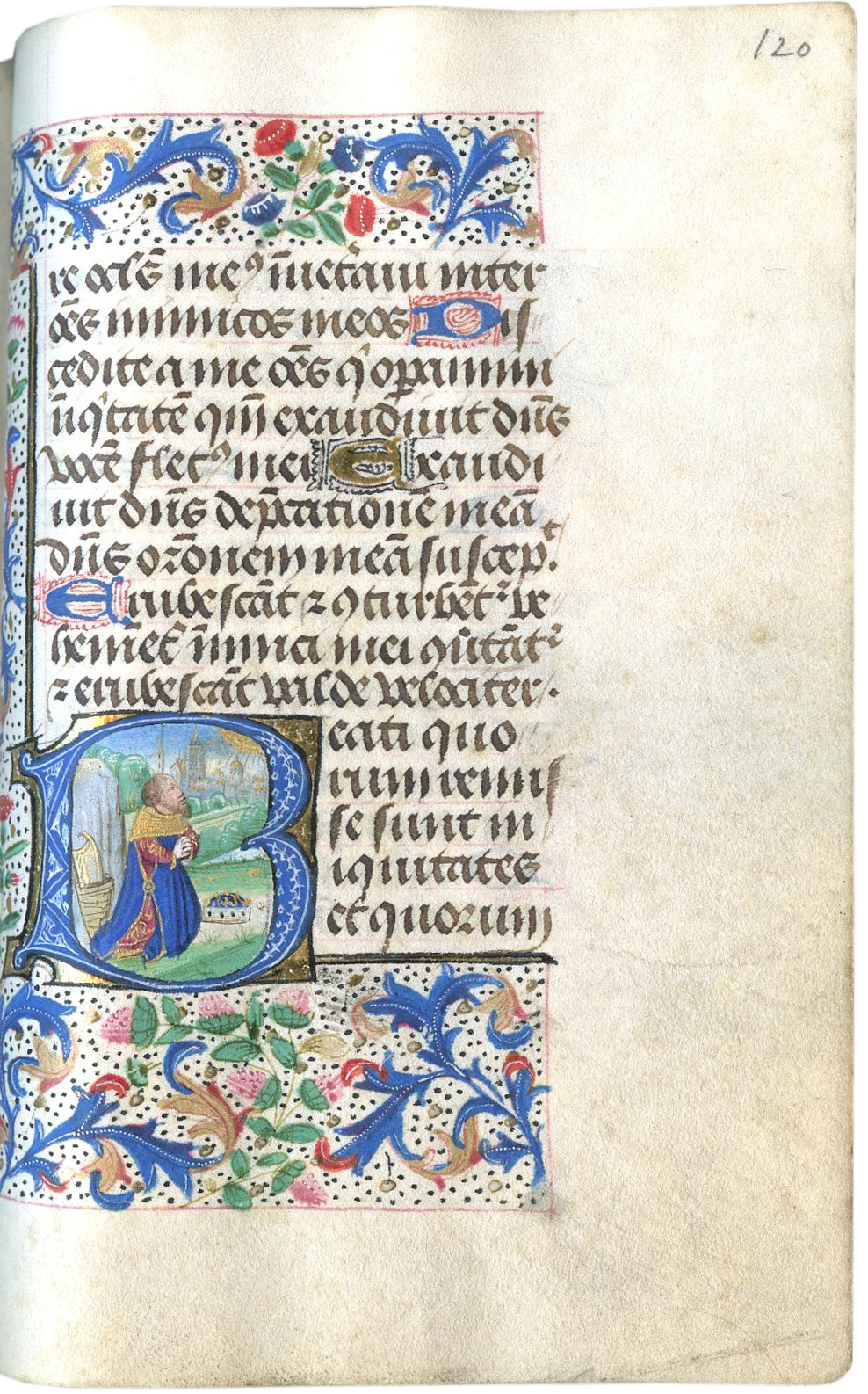
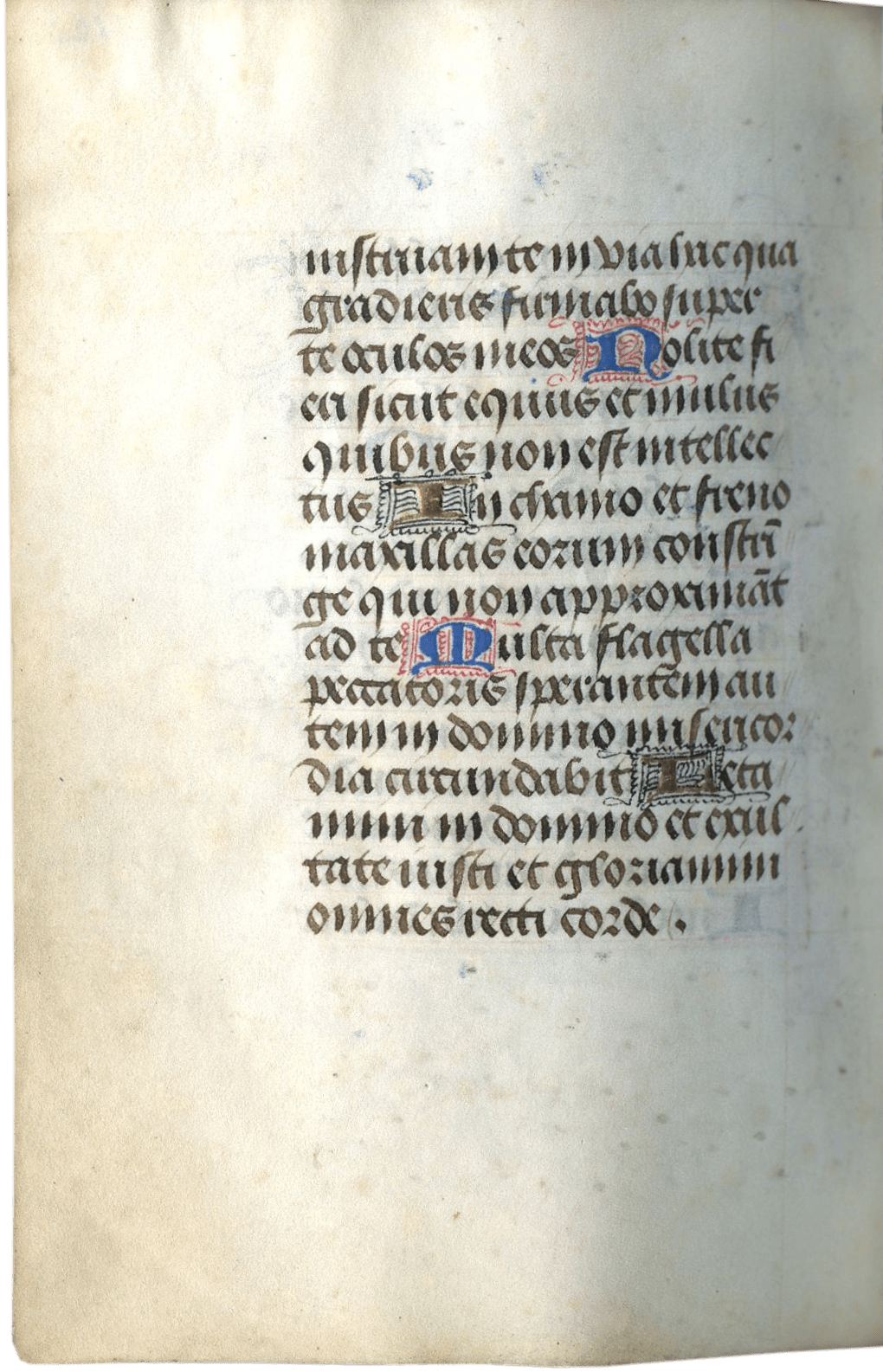
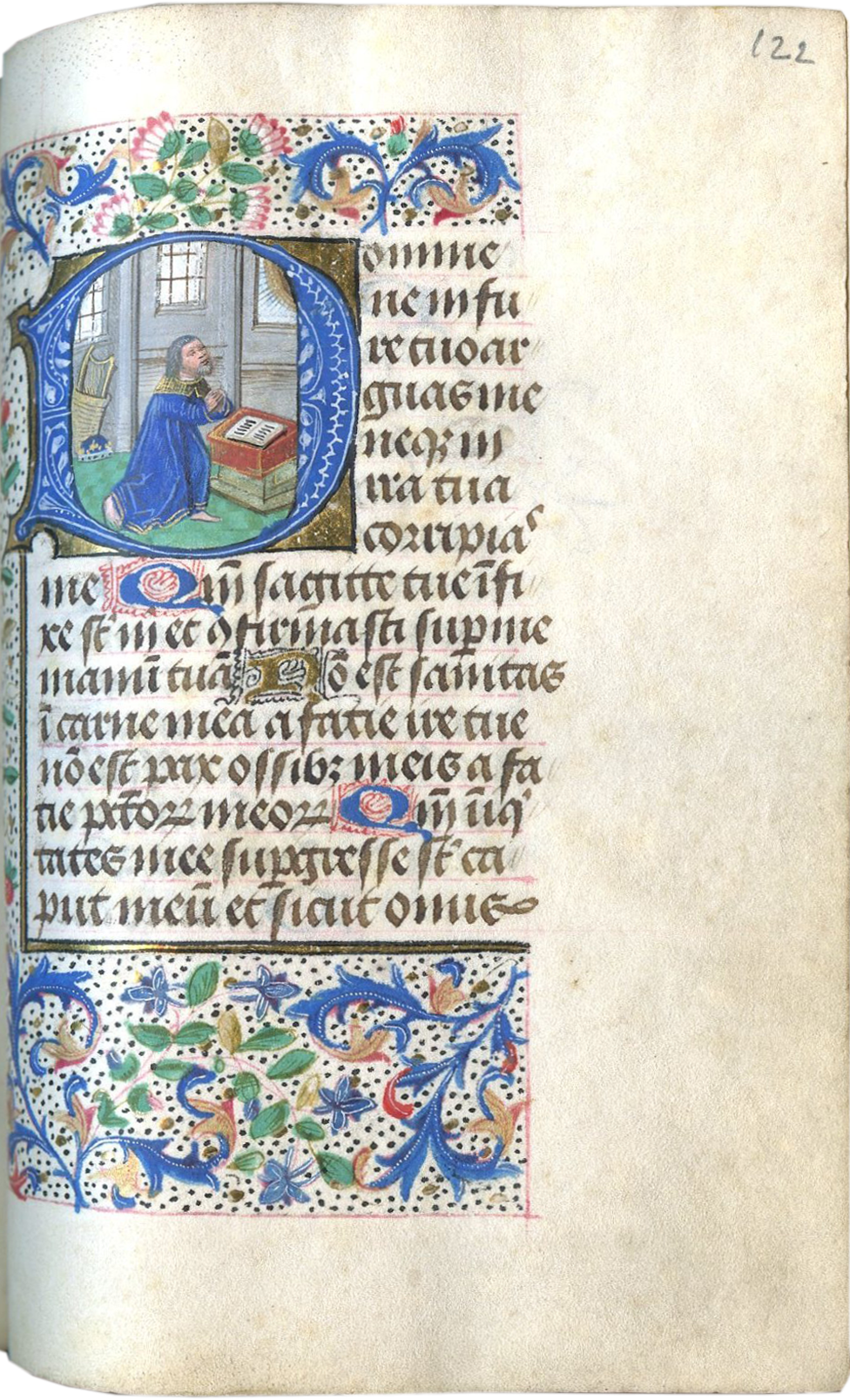


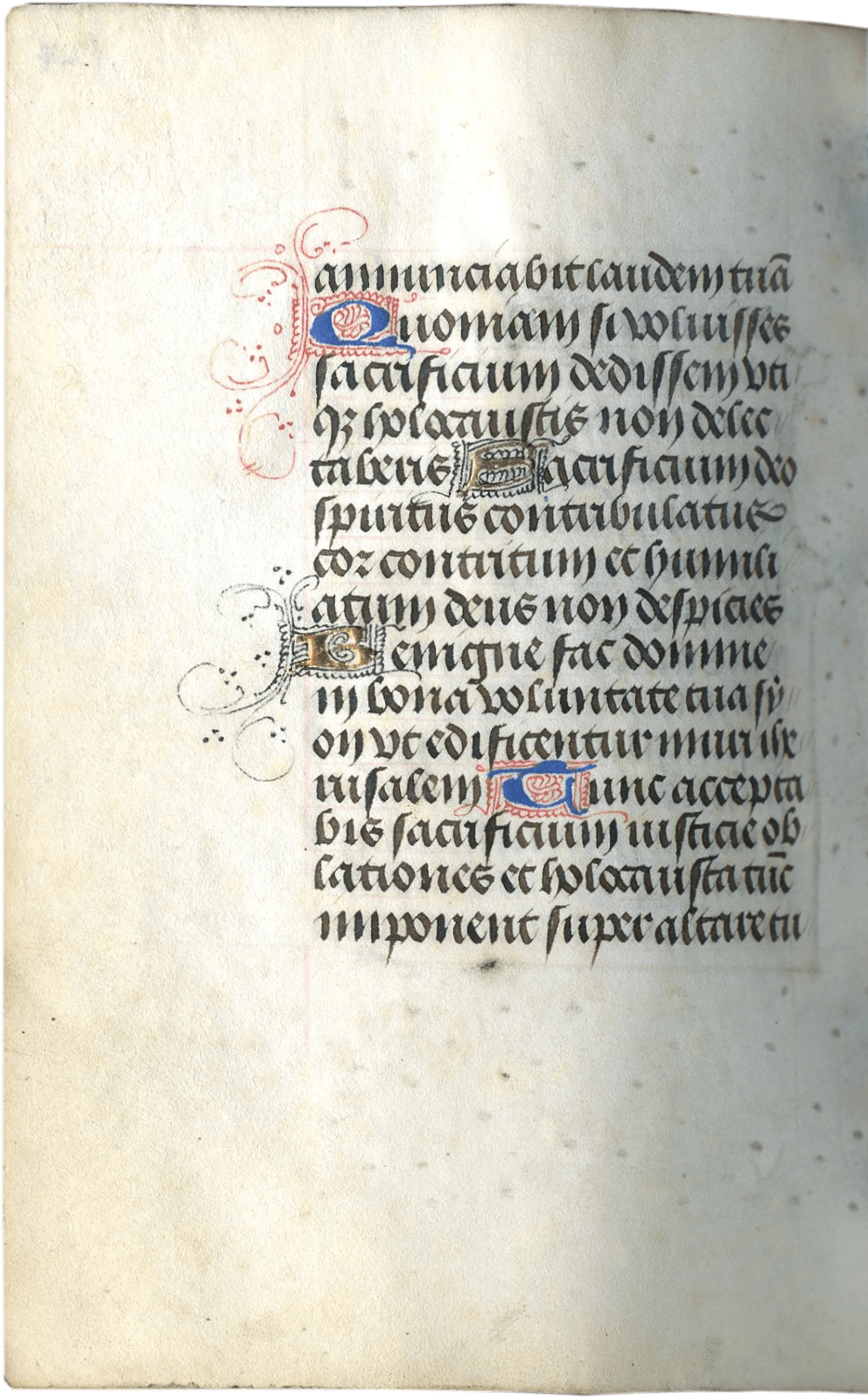
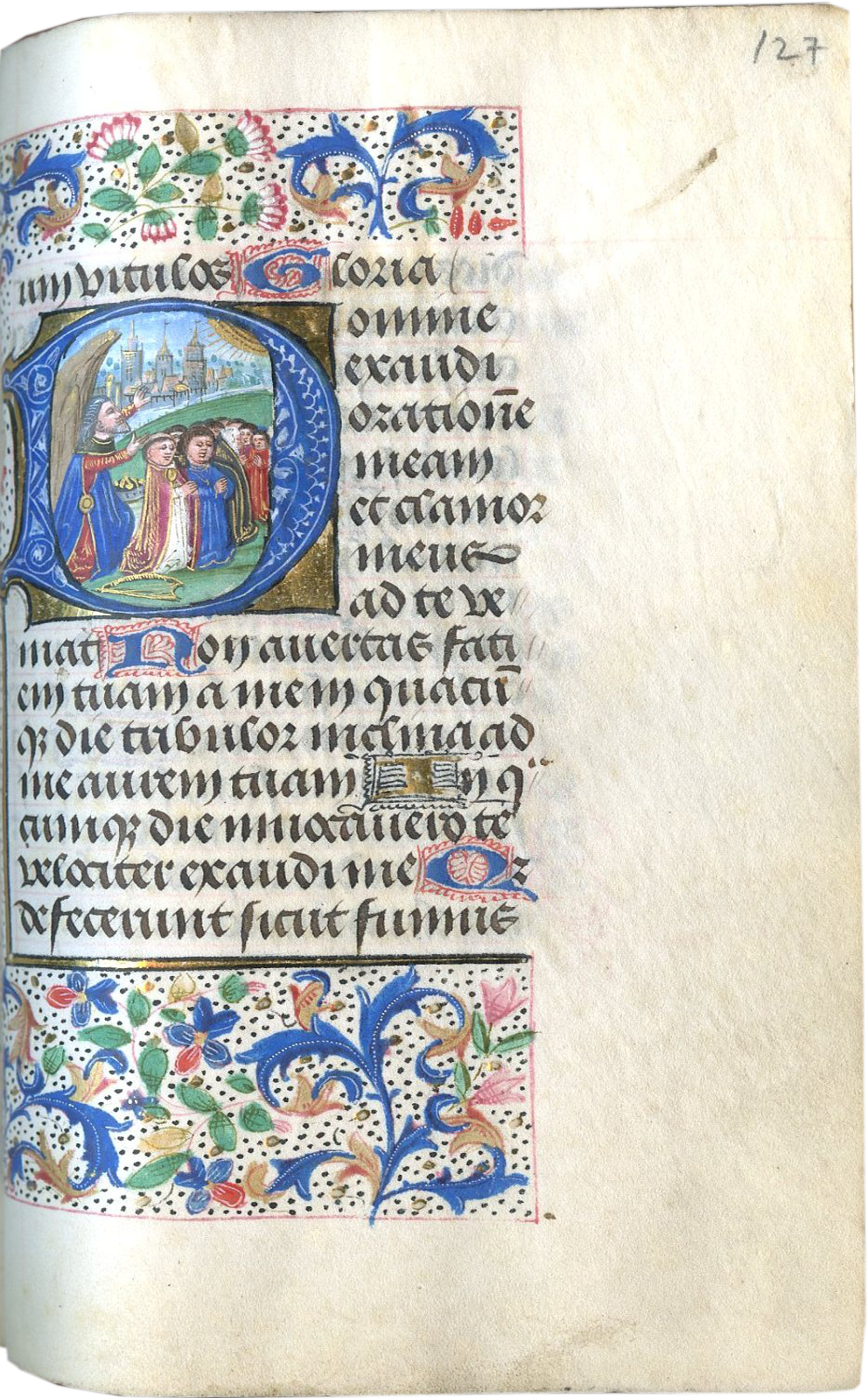


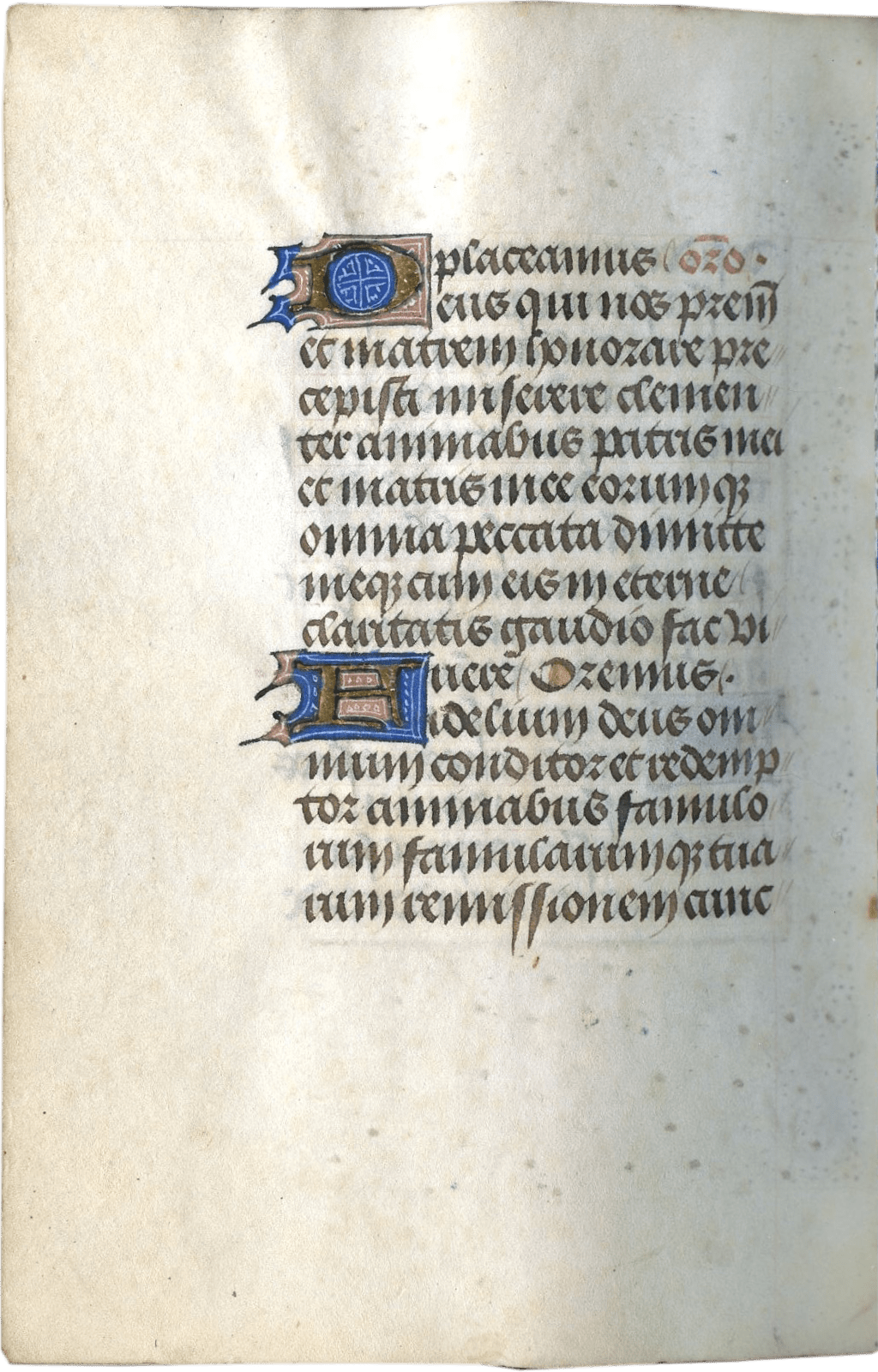
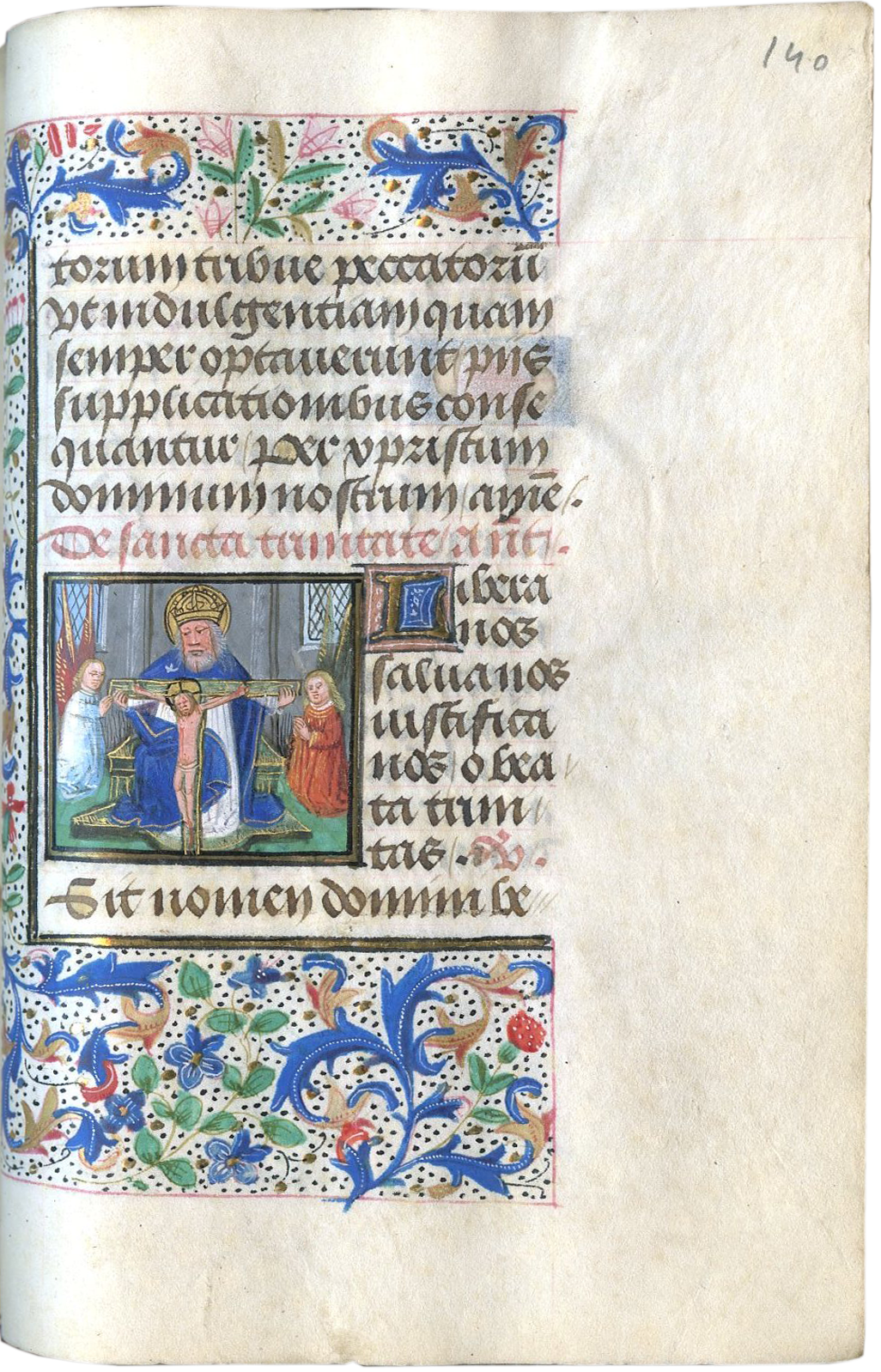
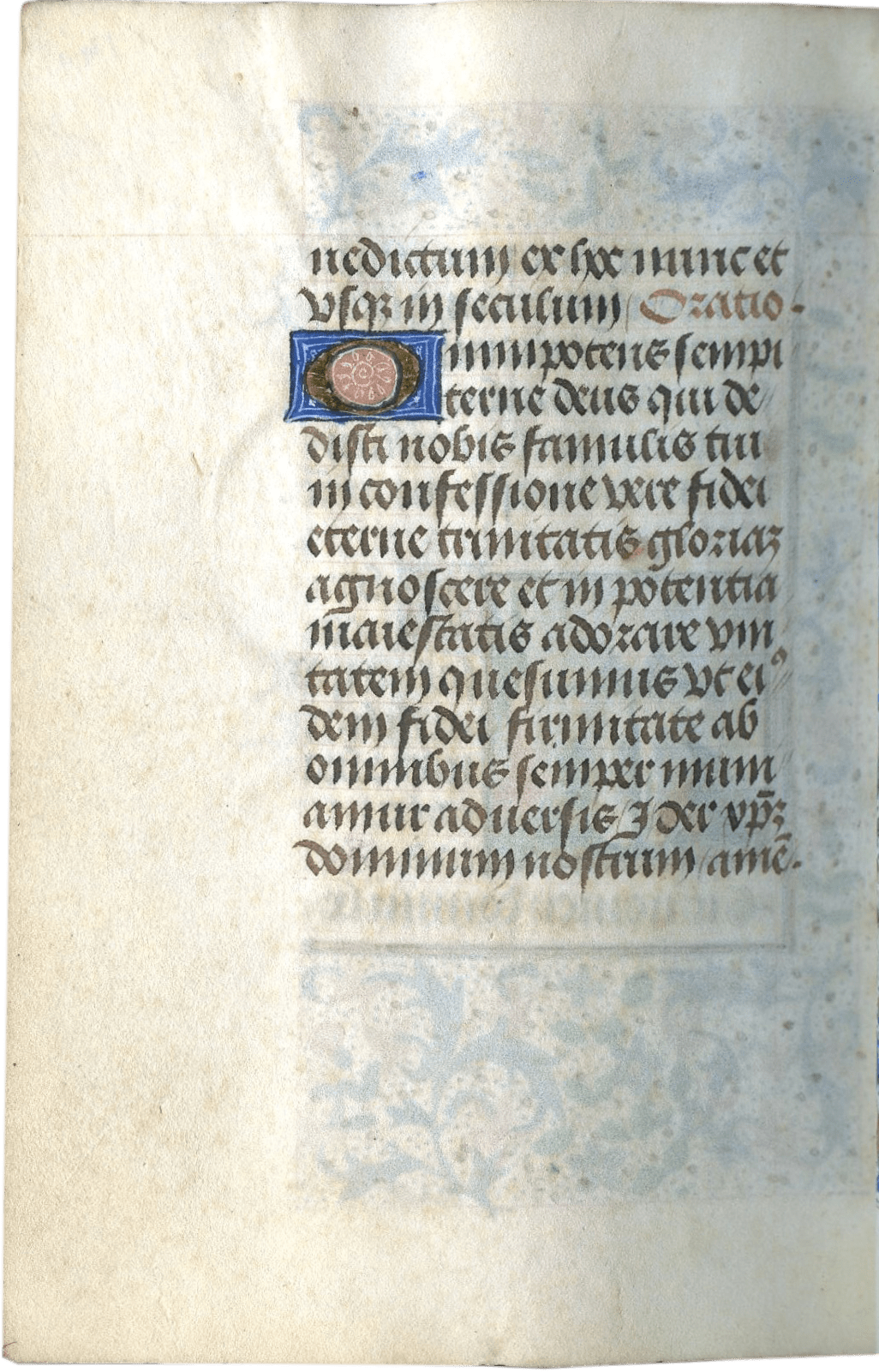
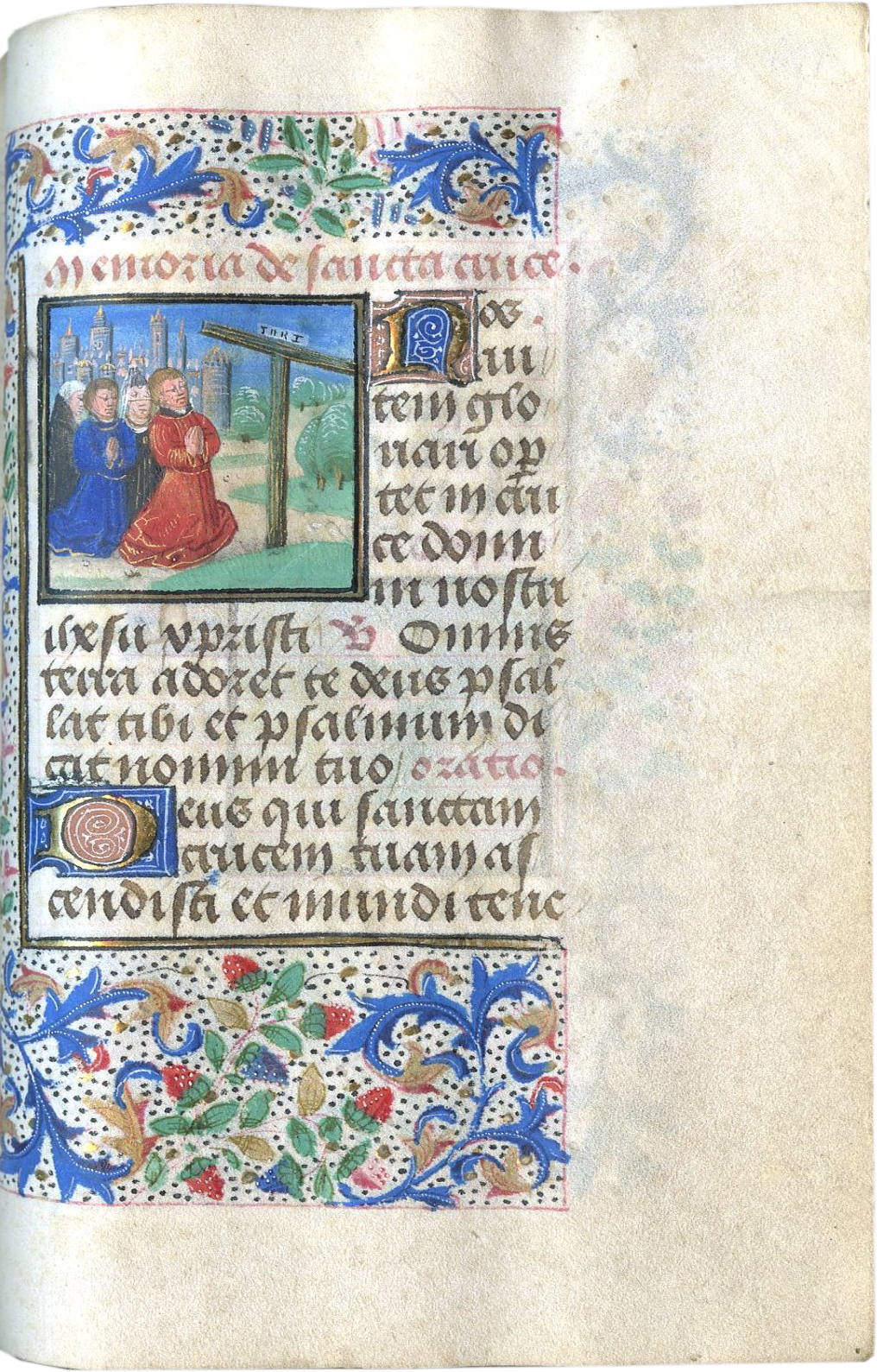

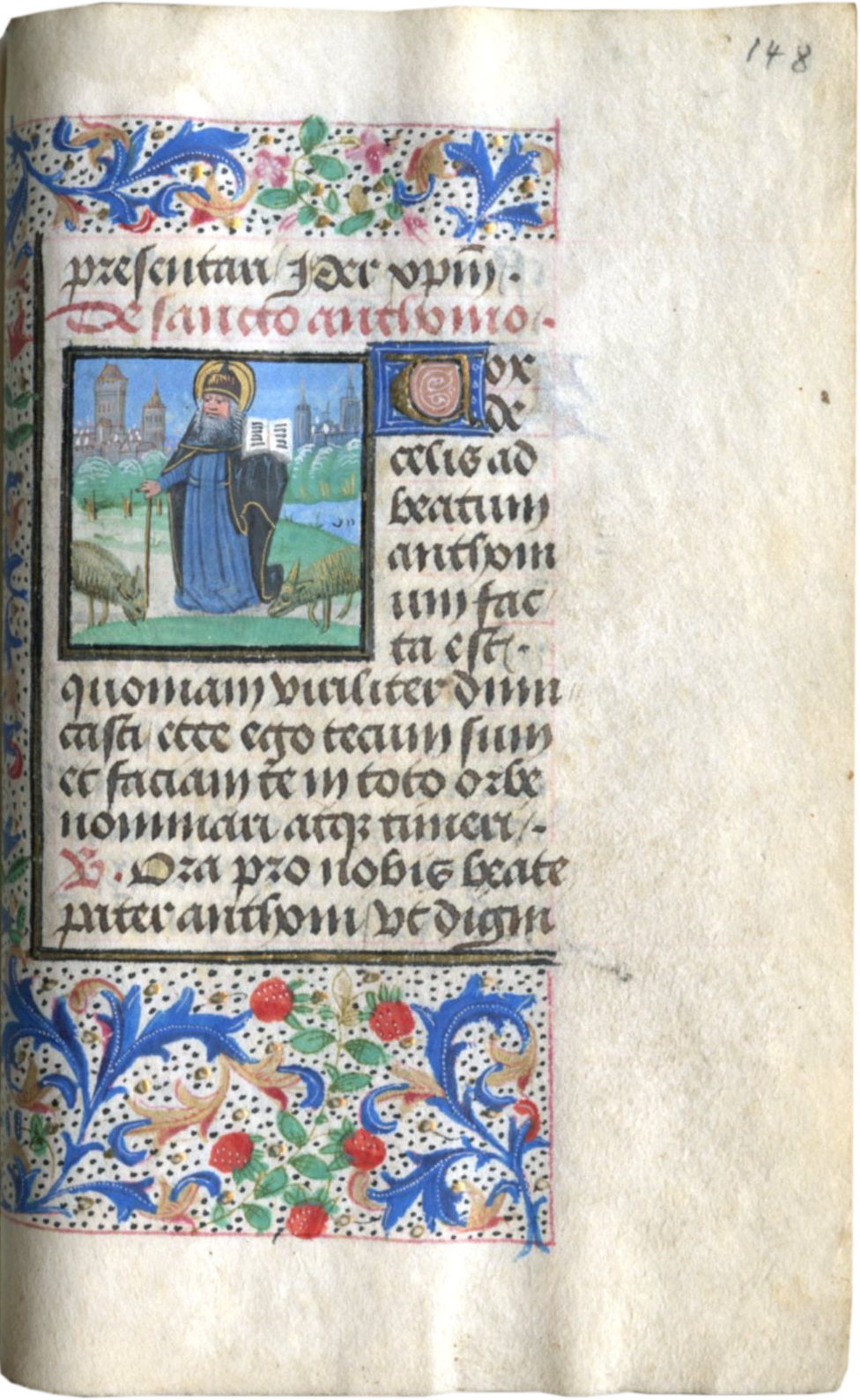
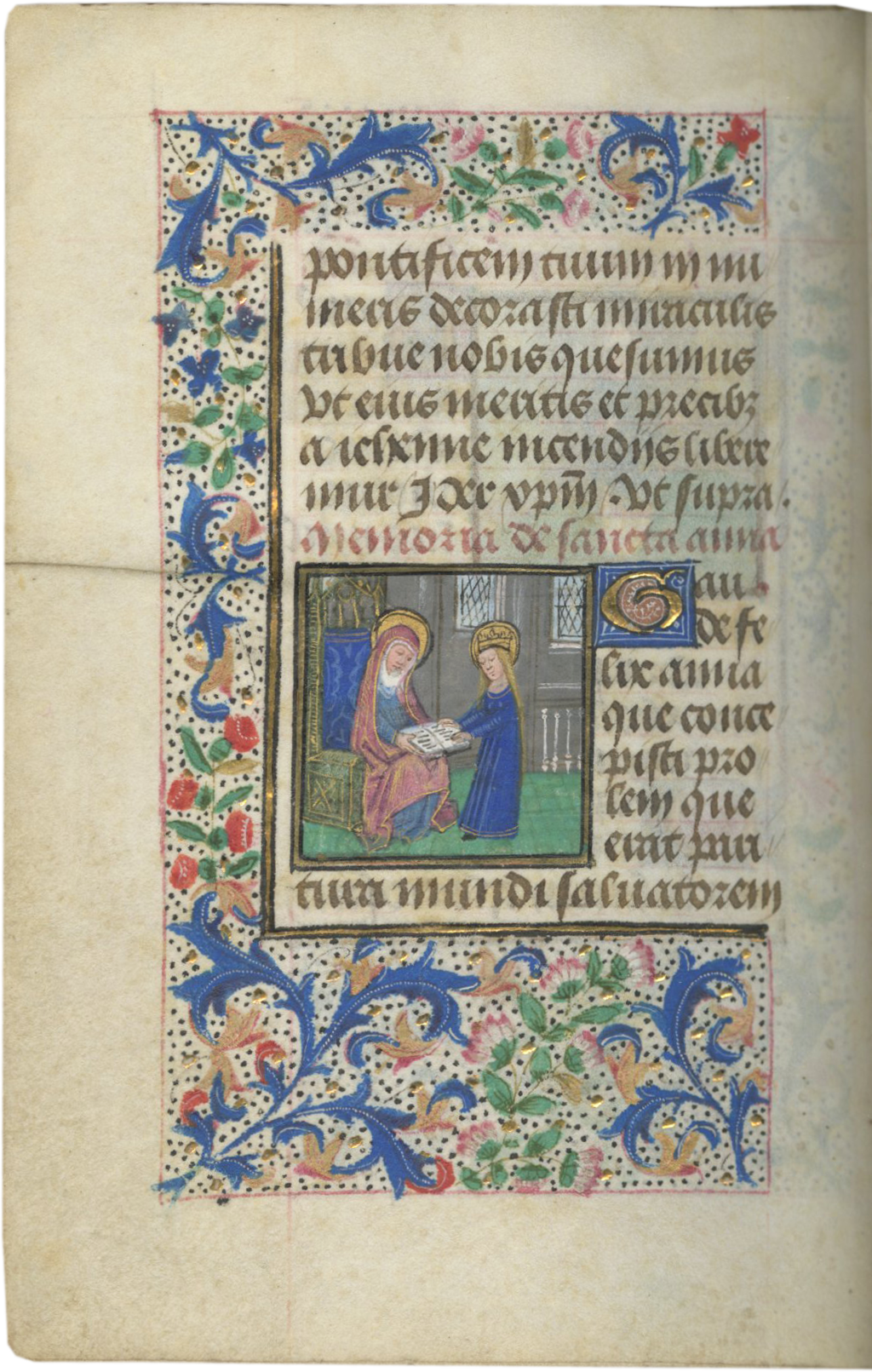

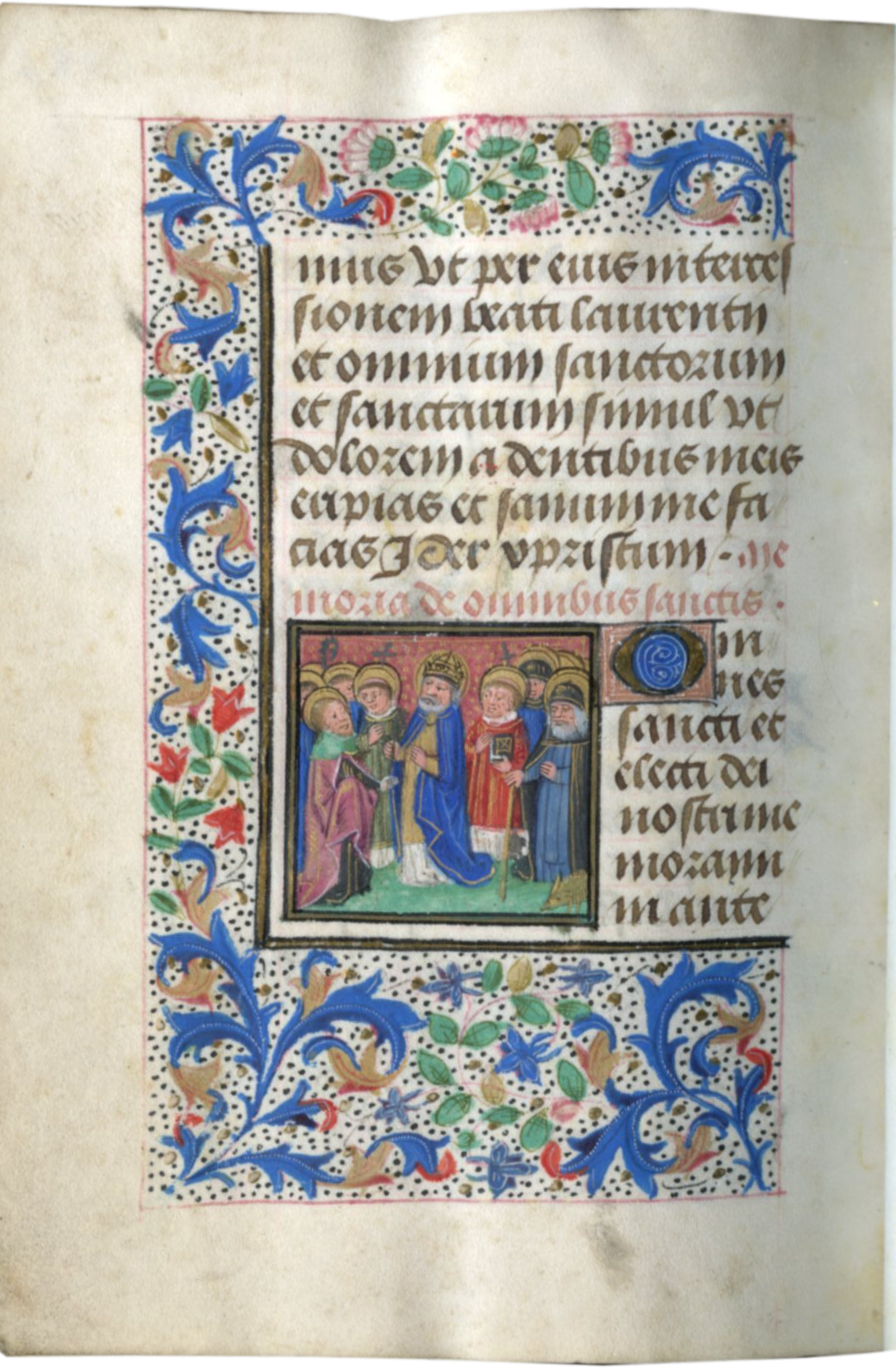
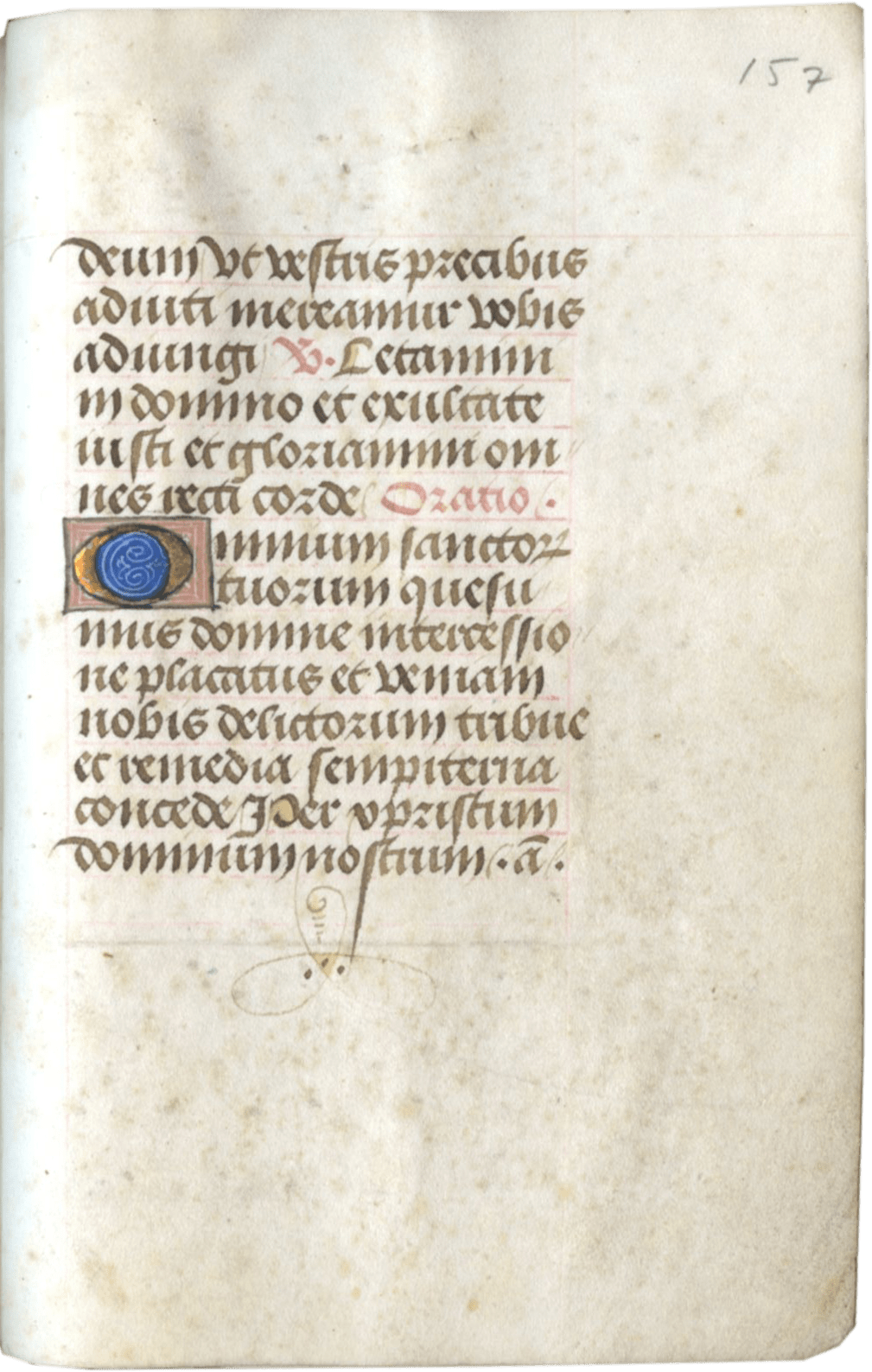
Description
This charming Book of Hours, fitting neatly into one’s hand, represents up-to-date illumination in Bruges in the decade following the death of Willem Vrelant in 1481/1482. For three decades Vrelant operated a flourishing workshop with apprentices, along with his wife, and some of these must have continued his style, represented here in skilled small initials. Two of his successors painted the large miniatures for a family that special-ordered the volume and is depicted in contemporary dress in one of the illuminations. The Ghent-Bruges borders also herald the “new” style in Bruges
157 ff., preceded and followed by two blank flyleaves, complete (collation: i6, ii6, iii8 +2 [with 2 tipped-in singletons, one full-page miniature and one text leaf], iv7+1 [of 8, with last folio of quire cancelled and one tipped-in full-page miniature], v8+1,vi8+1, vii5 [of 6, last folio of quire cancelled], viii10+1, ix4, x12, xi4, xii12, xiii4, xiv8, xv4, xvi5 [of 6, with last folio of quire cancelled], xvii10, xviii6, xix8, xx10, xxi7 [of 8, with one folio cancelled, likely first folio of quire]), all full-page miniatures on tipped-in singletons, 15 long lines per page, ruled in light red ink, justification 65 x 45 mm., written in a fine Gothic script in dark brown ink, rubrics in pale red, line-fillers in blue and gold, numerous painted initials in blue or gold with pen flourishing of red or dark blue respectively, numerous 2-line initials in highly burnished gold on alternately pink and blue grounds patterned with white tracery, one 5-line painted blue initial on a burnished gold ground with pink and blue foliate infill (f. 41), five 6-line initials incorporated in full-border pages (silver twig or foliate motifs on gold grounds), 6 full-page miniatures (tipped in on single leaves), surrounded by and facing full-page illusionistic borders of the “Ghent-Bruges” type with silver [or liquid gold] acanthus stems, sprays of flowers, fruit, insects, birds and animals (some trompe l’oeil) on painted liquid gold [or silver] grounds, and 41 small miniatures or historiated initials framed by three-quarter borders of blue and gold acanthus leaves on speckled grounds intertwined with floral motifs and burnished gold besants. Bound in nineteenth-century blind-stamped brown calf binding, semé of leafy motifs on upper and lower boards, back sewn on four raised bands, with blind-stamped ornamental motifs and gilt title Hore Sancte Crucis, gilt and gauffered edges, some scuffing to binding, hinges a bit loose, interior very fresh. Dimensions 135 x 80 mm.
Provenance
1. The Calendar and style of illumination secure a Flemish origin for this manuscript, and the owner(s) with family are represented in contemporary dress on f. 141. Bruges is the likely place of production, and probably use, of the manuscript because of the Calendar and the identities of the illuminators.
2. Inscription faintly legible (sixteenth-century?) with motto on f. 13, Beauté rend dezir and the name N. de Costdenhould (?).
3. Armorial bookplate (nineteenth-century) pasted on upper pastedown, “Bibliothèque de Mr. De Badts de Cugnac,” with motto, Ingratis servire nefas. This is probably the bibliophile from Lille (1841-1888). A private chapel annexed to the chateau in Marcq-en-Barouel near Lille and erected in 1843 by the family was declared a historic monument in 1951.
4. Les Enluminures, Catalogue 13, Picturing Piety: The Book of Hours, by Roger S. Wieck with Sandra Hindman and Ariane Bergeron-Foote, 2007, no. 10; then Private Collection, USA
Text
ff. 1-12v, Calendar, in Latin, in light red and brown ink, with noteworthy saints confirming use of Bruges: Aldegundis (Jan. 30); Amand and Vedast, in red (Feb. 6); Silvinus (Feb. 17); Roman martyrs (Feb. 28); Gertrude (March 17); Ursmari (April 17); Quentin (May 2); Boniface (June 5); Medard (June 8); Basilius in red (June 14)[see R. Wieck, 1988, 153-156];
f. 13, blank; inscribed with the motto “Beauté rend dezir” and the name “N. de Costdenhould (?)”
ff. 14-22v, Hours of the Cross;
f. 23, blank;
ff. 24-30v, Hours of the Holy Spirit;
f. 31, blank;
ff. 32-39, Hours of the Dead, rubric, Hore pro defunctis;
f. 40, blank;
ff. 41-46, Mass of the Virgin, rubric, Missa beate marie;
ff. 46v-53, Gospel Sequences;
f. 54, blank;
ff. 55-117v, Hours of the Virgin, use of Rome, with Matins (ff. 55-67v), Lauds (ff. 68-81v), Prime (ff. 82-87v), Terce (ff. 87v-92v), Sext (ff. 92v-97v), None (ff. 97v-102v), Vespers (ff. 102v-111v), Compline (ff. 111v-117v);
f. 118, blank;
ff. 119-133, Penitential Psalms;
ff. 133-140, Litany and prayers;
ff. 140-140v, Suffrage to the Holy Trinity;
ff. 141-141v, Suffrage to the Holy Cross, rubric, Memoria de sancta cruce;
ff. 141v-142, Suffrage to John the Baptist, rubric, De sancto iohanne baptista;
ff. 142-143, Suffrage to Peter and Paul, rubric, Apostolorum petri et pauli antiphona;
ff. 143-144, Suffrage to James, rubric, De sancto iacobo;
ff. 144-145v, Suffrage to St. Christopher, rubric, De sancto xpristoforo antiphona;
ff. 145-146v, Suffrage to St. Sebastian, rubric, De sancto sebastiano antiphona;
ff. 147-148, Suffrage to St. Adrian, rubric, De sancto adriano;
ff. 148-148v, Suffrage to St. Anthony, rubric, De sancto anthonio;
ff. 149-149v, Suffrage to St. Francis, rubric, De sancto francisco antiphona;
ff. 150-150v, Suffrage to St. Nicolas, rubric, De sancto nycholao;
ff. 150v-151v, Suffrage to St. Anne, rubric, Memoria de sancta anna;
ff. 152-152v, Suffrage to St. Catherine, rubric, De sancta katherina antiphona;
ff. 153-153v, Suffrage to St. Barbara, rubric, De sancta barbara oratio;
ff. 154-154v, Suffrage to Mary Magdalene, rubric, De sancta maria magdalena;
ff. 155-155v, Suffrage to Margaret, rubric, De sancta margareta antiphona;
ff. 155v-156v, Suffrage to St. Apollonia, rubric, De sancta appolania antiphona;
ff. 156v-157, Suffrage to All Saints, rubric, Memoria de omnibus sanctis;
f. 157v, blank.
Illustration
Full-page miniatures:
f. 13v, Crucifixion;
f. 23v, Pentecost;
f. 31v, Raising of Lazarus;
f. 40v, Madonna and Child;
f. 54v, Annunciation;
f. 118v, David in prayer.
Small miniatures:
f. 15, Christ before Pilate;
f. 16v, Flagellation;
f. 17v, Christ carrying the Cross;
f. 18v, Crucifixion between Mary and John;
f. 111v, Flight into Egypt;
f. 120, David in prayer;
f. 122, David in prayer before a lectern;
f. 124v, David and Bathsheba;
f. 127, David in prayer, with kneeling men;
f. 130, David in prayer, before a lectern;
f. 131, David in prayer, with Uriah (?) in the background;
f. 140, Trinity;
f. 141, Kneeling figures (the patrons?) in prayer before the Cross;
f. 141v, John the Baptist;
f. 142, Peter and Paul;
f. 143, James;
f. 144, St. Christopher carrying Christ Child;
f. 145v, Martyrdom of St. Sebastian;
f. 147, St. Adrian;
f. 148, St. Anthony;
f. 149, St. Francis showing his stigmata;
f. 150, St. Nicholas resuscitating the three boys;
f. 150v, St. Anne reading to the Virgin;
f. 152, St. Catherine;
f. 153, St. Barbara;
f. 154, Mary Magdalene;
f. 155, St. Margaret emerging from the dragon;
f. 155v, St. Apollonia;
f. 156v, All Saints.
The bookseller who compiled the miniatures in this Book of Hours was very clever. All the small miniatures are by an artist trained under Willem Vrelant. These display his characteristic palette of a royal blue, raspberry, chartreuse, and occasional gray. Typical too are the Vrelant-like borders of flat blue and gold acanthus, with the occasional flower, on a dotted background. Considering the date of the manuscript, the 1480s, these represent a conservative style that had dominated Bruges illumination in the 1460s. For the large miniatures and their facing borders the bookseller had a more avant-garde approach. For these miniatures he chose an artist who worked in the more fashionable contemporaneous styles from the 1460s and early 1480s. This painter of the large miniatures seems to have been influenced by the figural style and palette, in particular, of Loyset Liédet (c. 1420-1479) and the Master of Edward IV (fl. 1470s and ’80s). Compared to the Vrelant hand, this artist has a much more colorful palette and stockier figural types with, often, haggard faces. The borders around the miniatures and on the facing pages use stylish trompe-l’oeil acanthus painted in gray and white on a gold ground with the occasional strawberry or violet.
Several uncommon features in the text and illustration confirm that the book was specially commissioned, and the patron with his family appears in one of the small miniatures praying before the empty cross (f. 141). Unusual are the additional six small David miniatures (ff. 120-131) that complement the large traditional image of the kneeling king (fol. 118v) in the Penitential Psalms and the extra small Passion miniatures (ff. 15-18v) that complement the traditional large Crucifixion (f. 13v) in the Hours of the Cross. A textual rarity is the substitution of the Monday Hours of the Dead (ff. 32-39) for the more traditional (and longer) Office of the Dead. The burial miniature (f. 31v) marking this text is also unusual in showing the corpse being interred while still in its coffin (not common practice).
Literature
Bousmanne, Bernard. “Item à Guillaume Wyelant aussi enlumineur, in” Willem Vrelant: un aspect de l’enluminure dans les Pays-Bas méridionaux sous le mécénat des ducs de Bourgogne Philippe le Bon et Charles le Téméraire, Turnhout, 1997.
Dogaer, Georges, and James H. Marrow. Flemish Miniature Painting in the 15th and 16th Centuries, Amsterdam, 1987, pp. 116-17;
Farquhar, James D. “The Vrelant Enigma: is the Style the Man?” Quaerendo 4 (1974), pp. 100-108;
Kren, Thomas, and Scot McKendrick. Illuminating the Renaissance: The Triumph of Flemish Manuscript Painting in Europe, J. Paul Getty Museum, Los Angeles, 2003, pp. 230-33, 295-305, 335-43;
Van Buren, Anne. “Willem Vrelant: Questions and Issues,” Revue Belge d'archéologie et d'bistoire de l'art 48 (1999), pp. 3-30 ;
Wieck, Roger S. Time Sanctified: The Book of Hours in Medieval Art and Life, New York, 1988.
Wieck, Roger S. “The Death Desired: Books of Hours and the Medieval Funeral,” in Death and Dying in the Middle Ages, ed. Edelgard E. DuBruck and Barbara I. Gusick, New York, 1999, pp. 431-76.
Online Resources
Bodo Brinkmann, “Liédet, Loyset,” Grove Art Online, http://www.groveart.com/;
D. Proske-Van Heerdt, “Vrelant, Willem,” Grove Art Online, http://www.groveart.com/